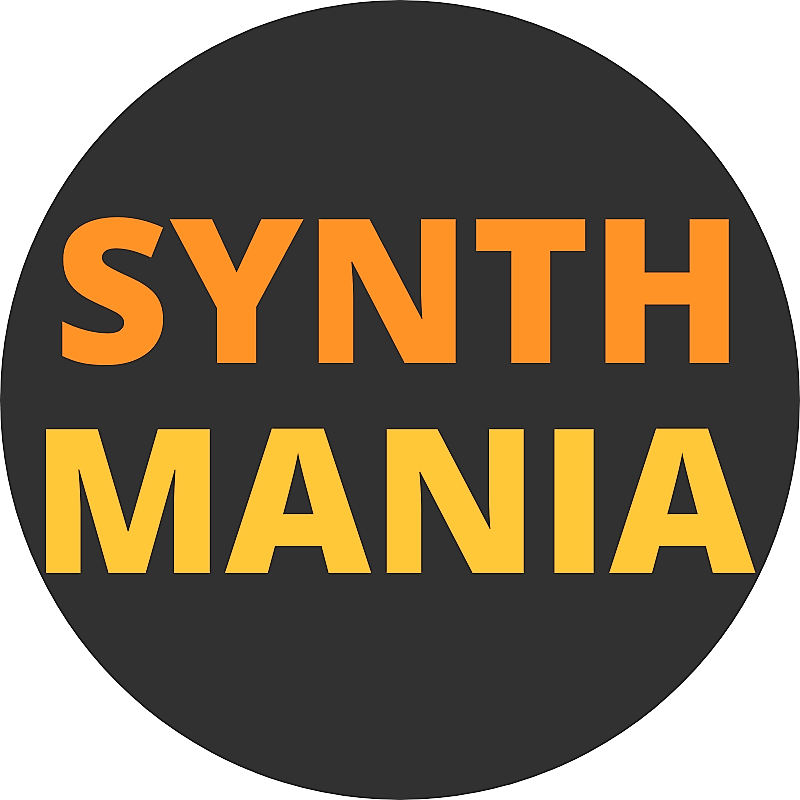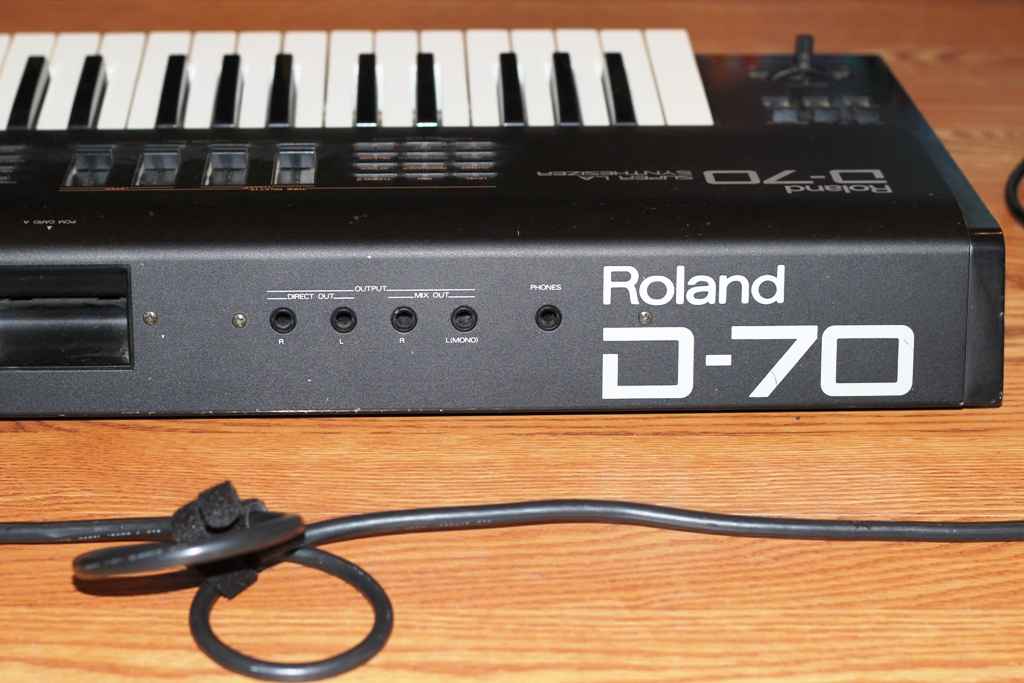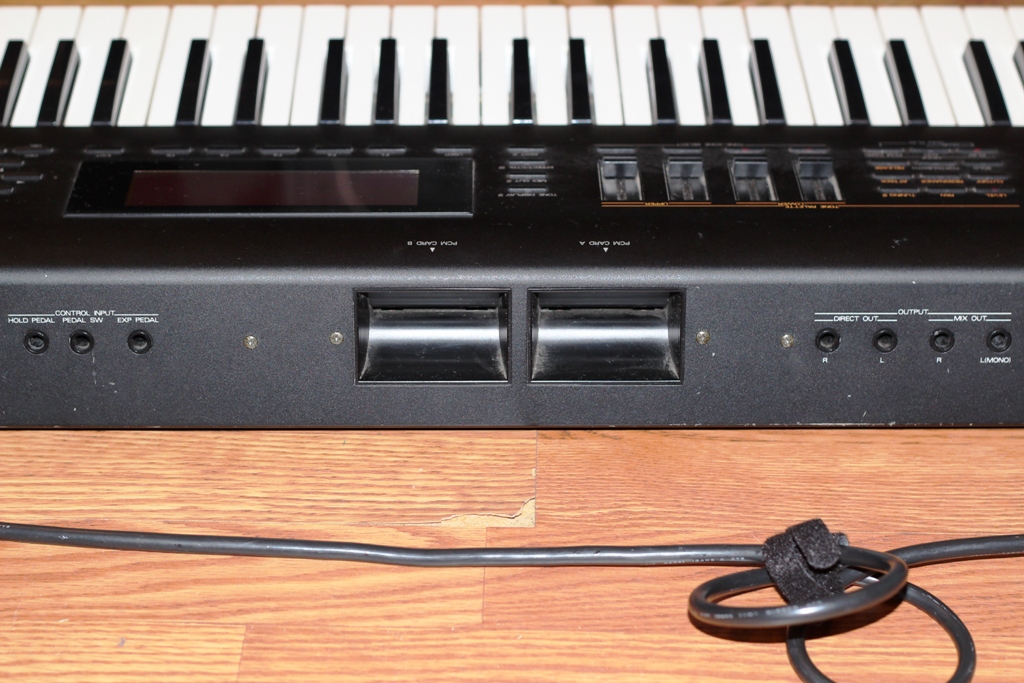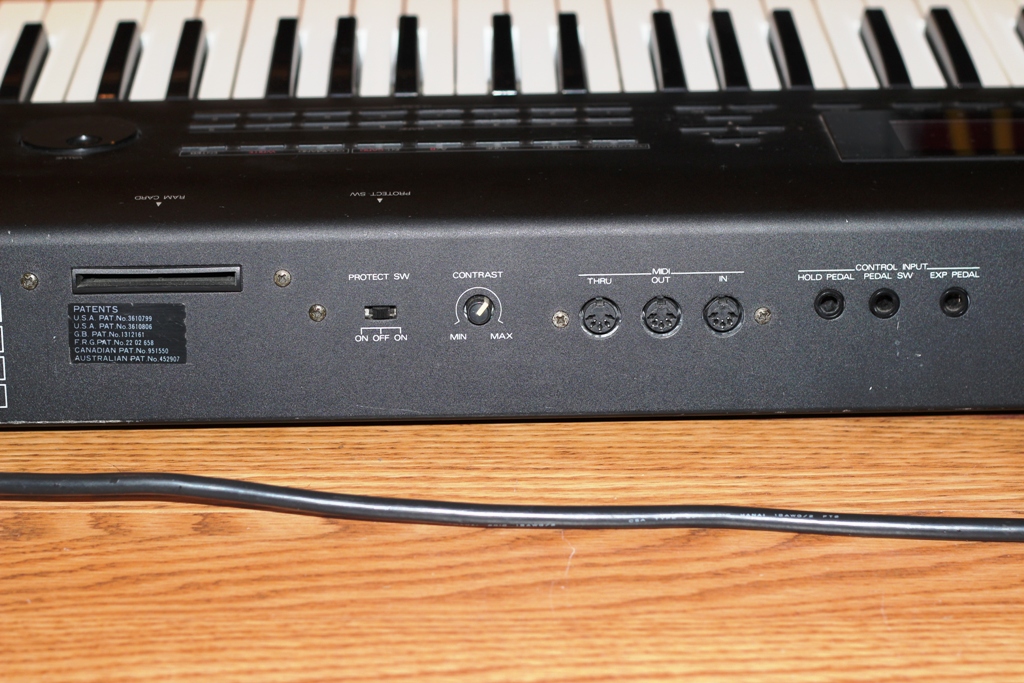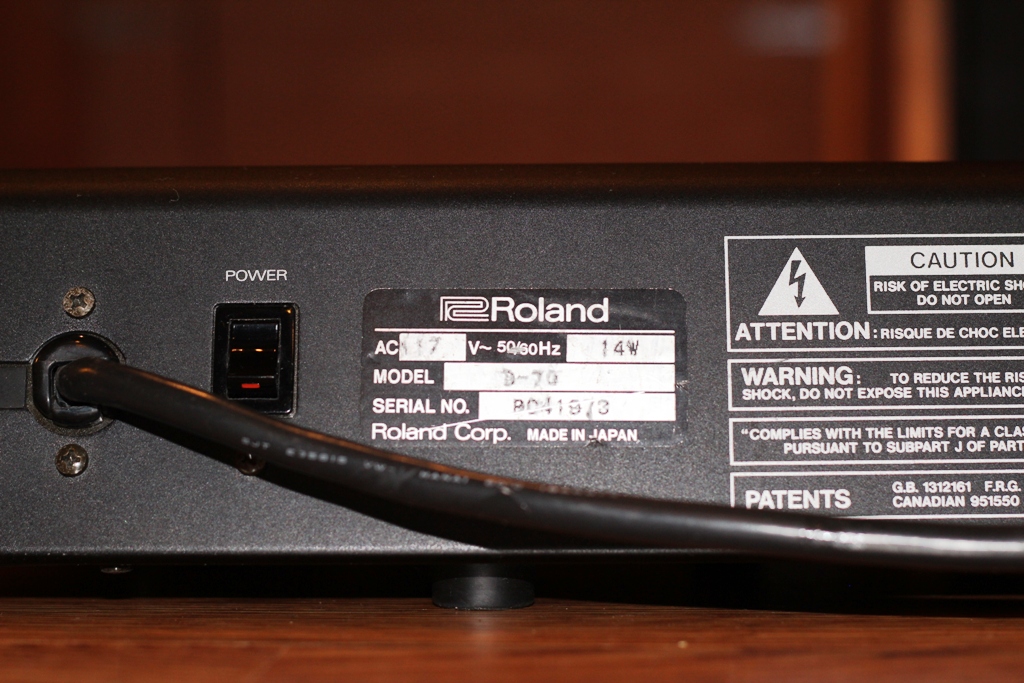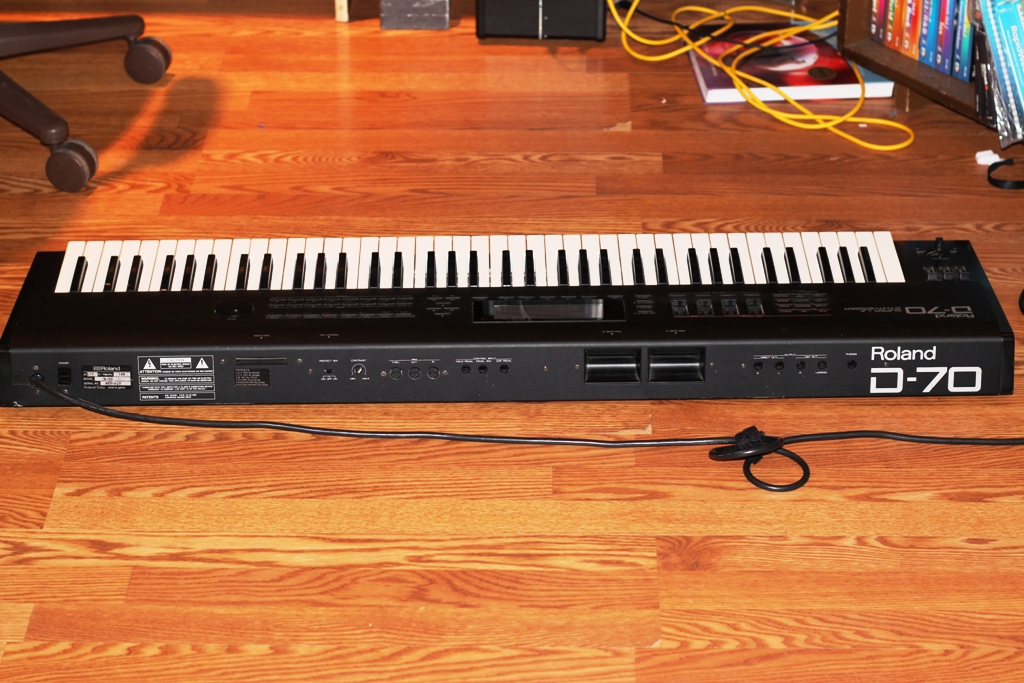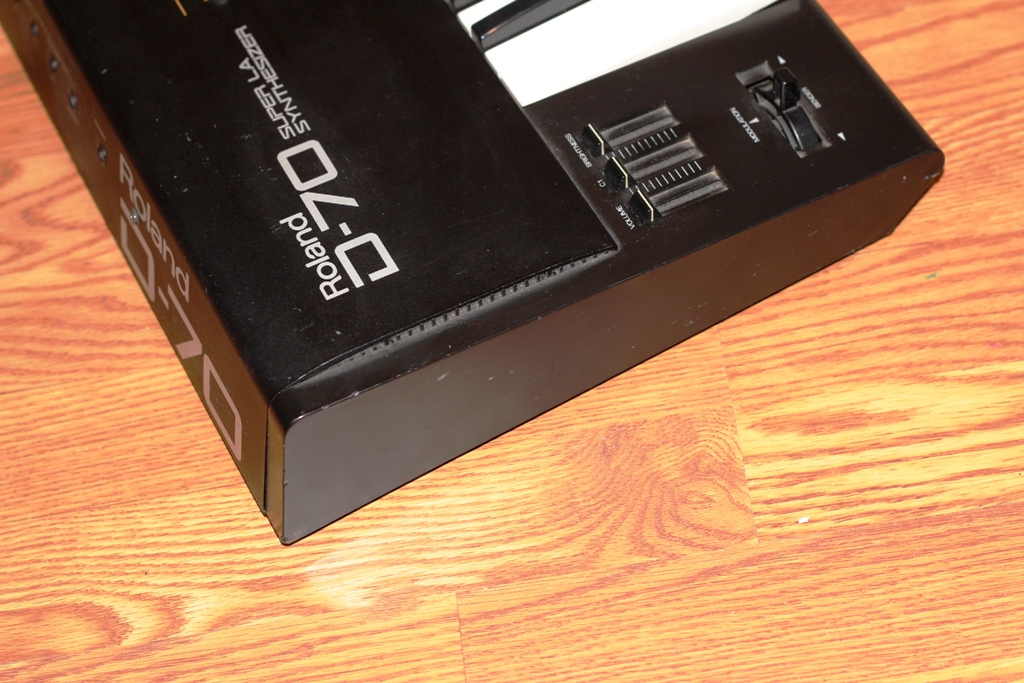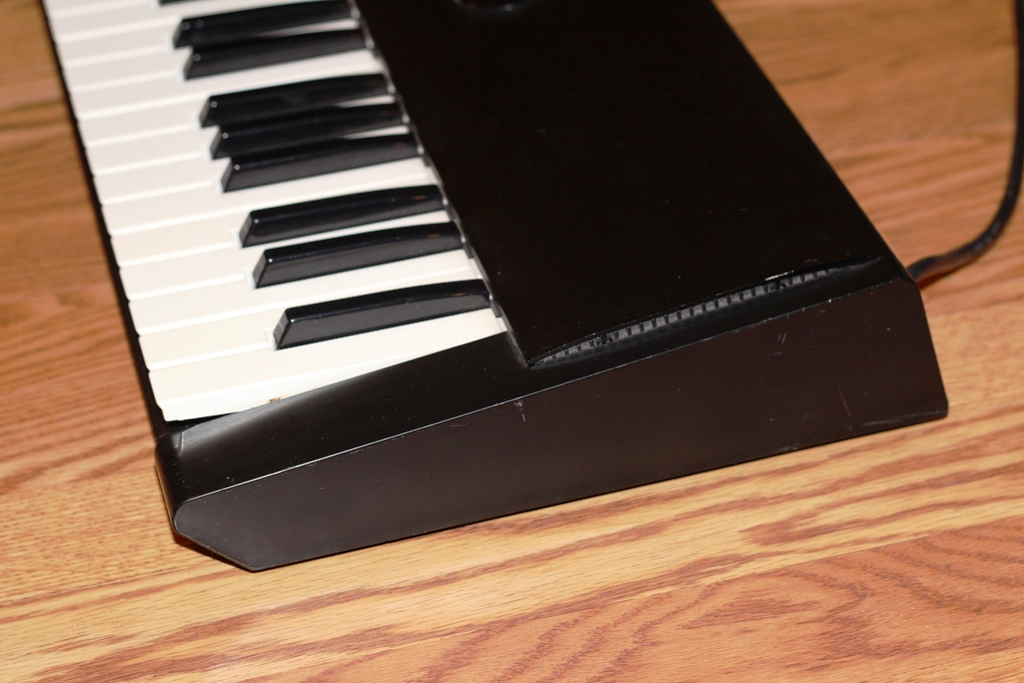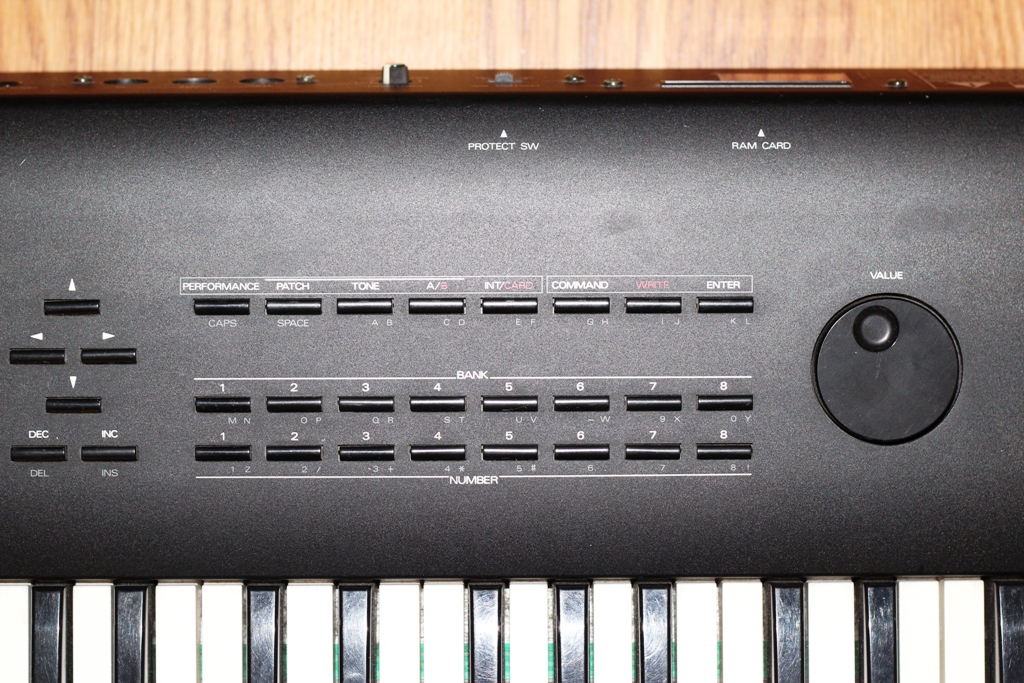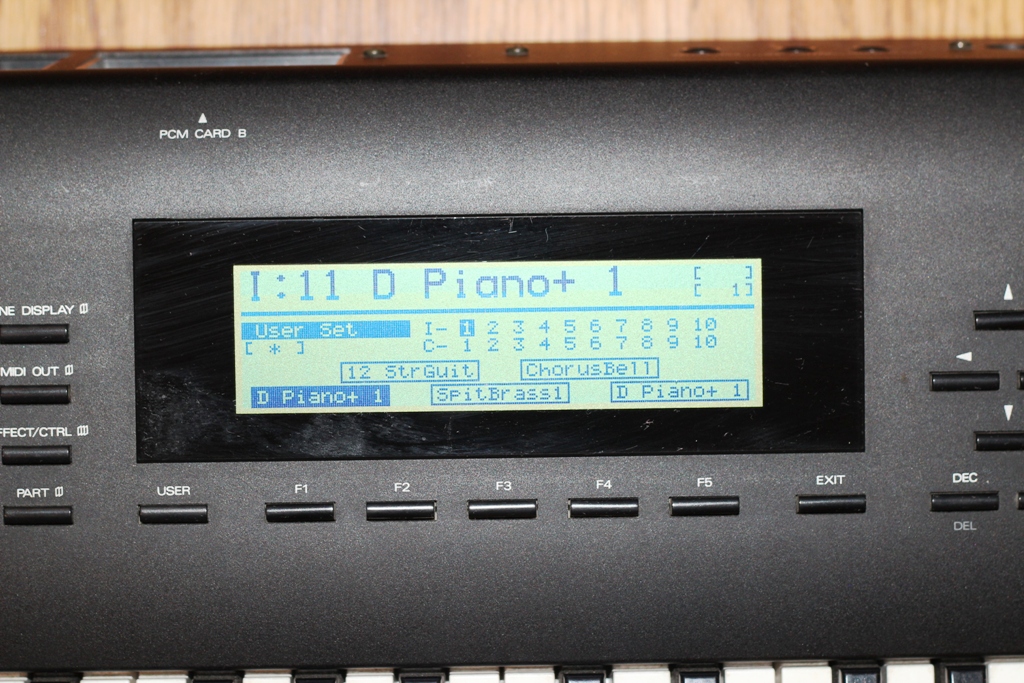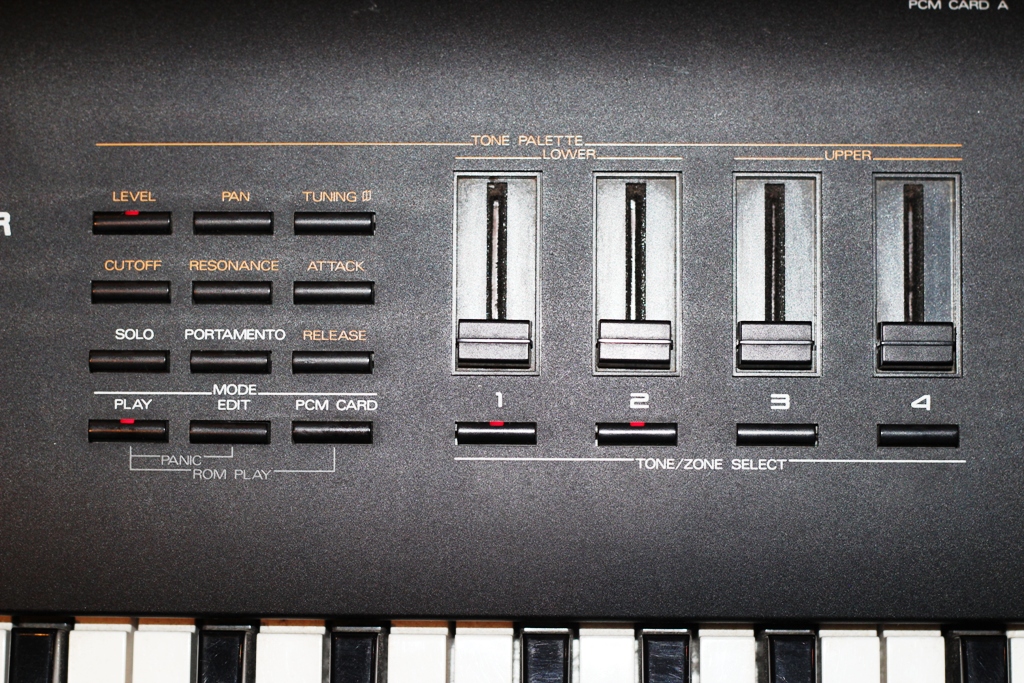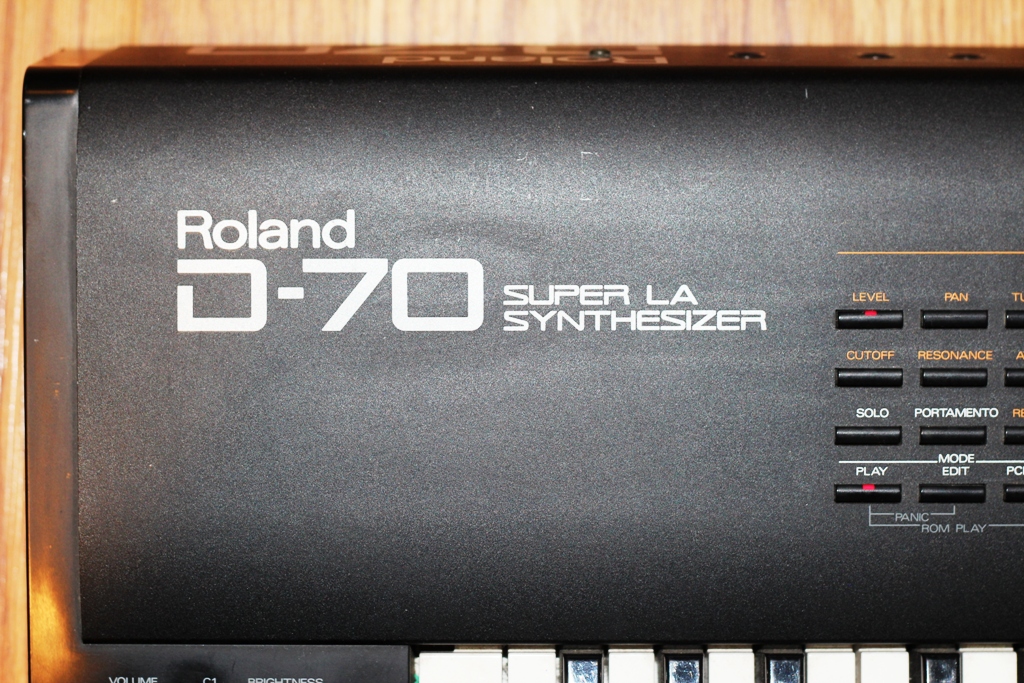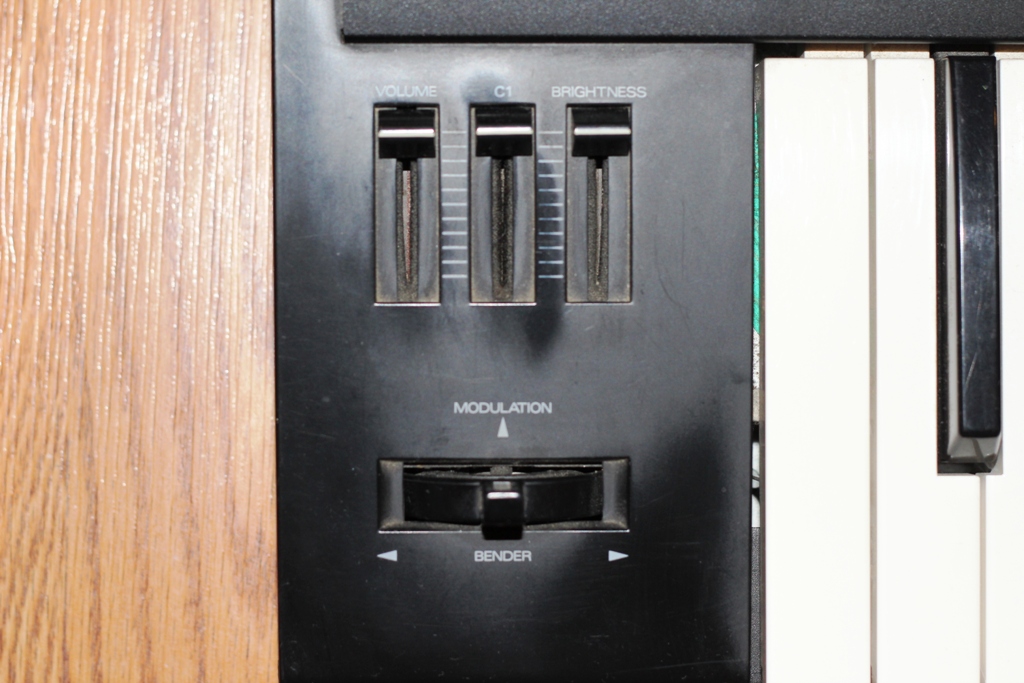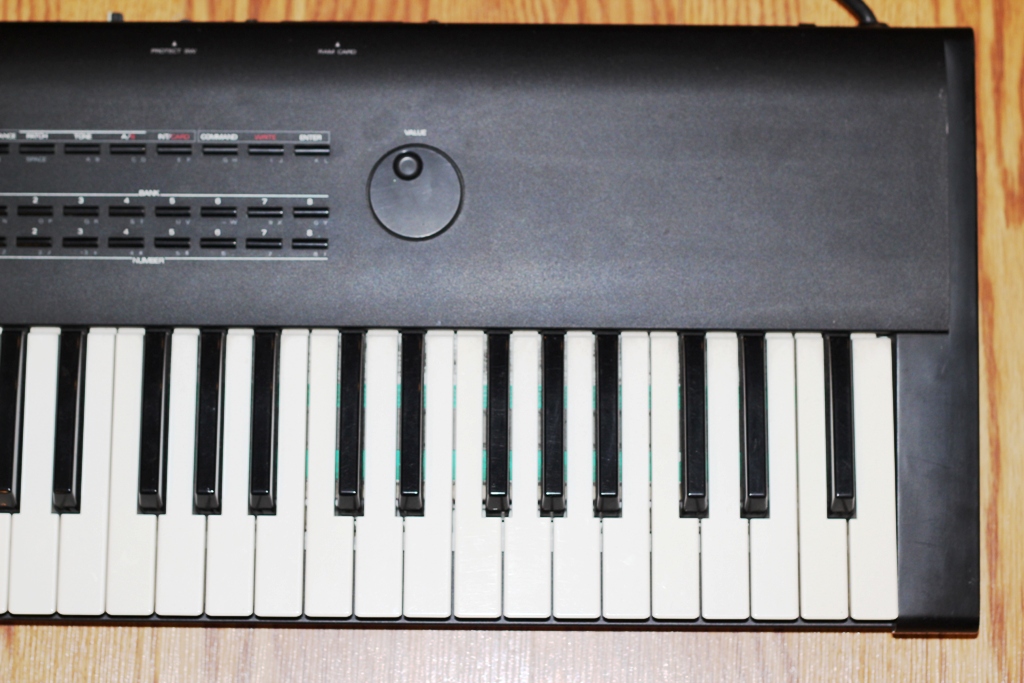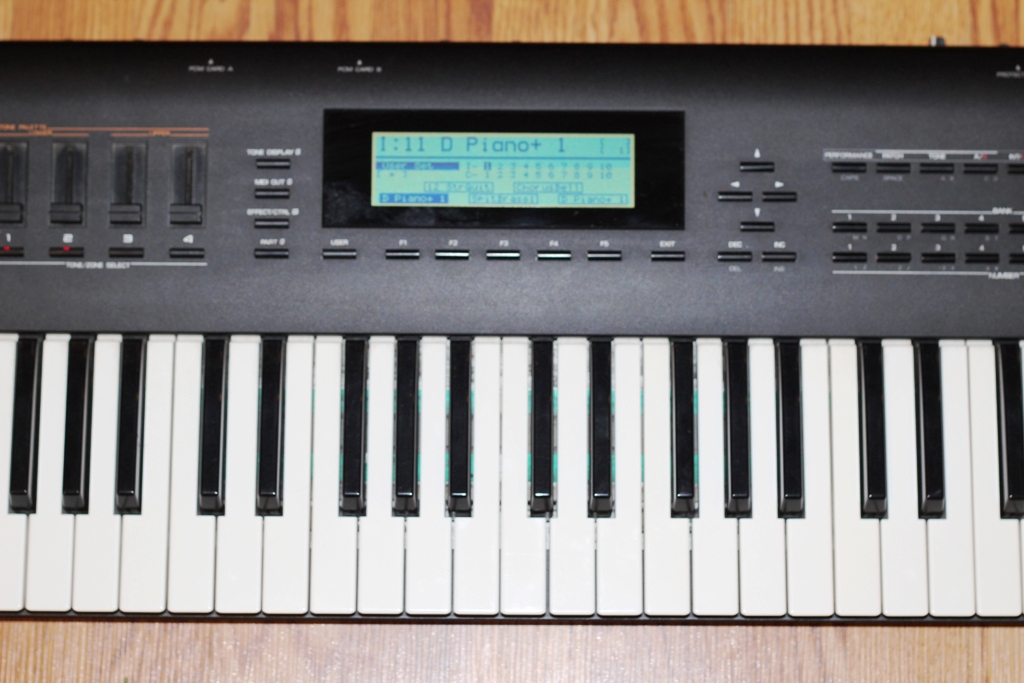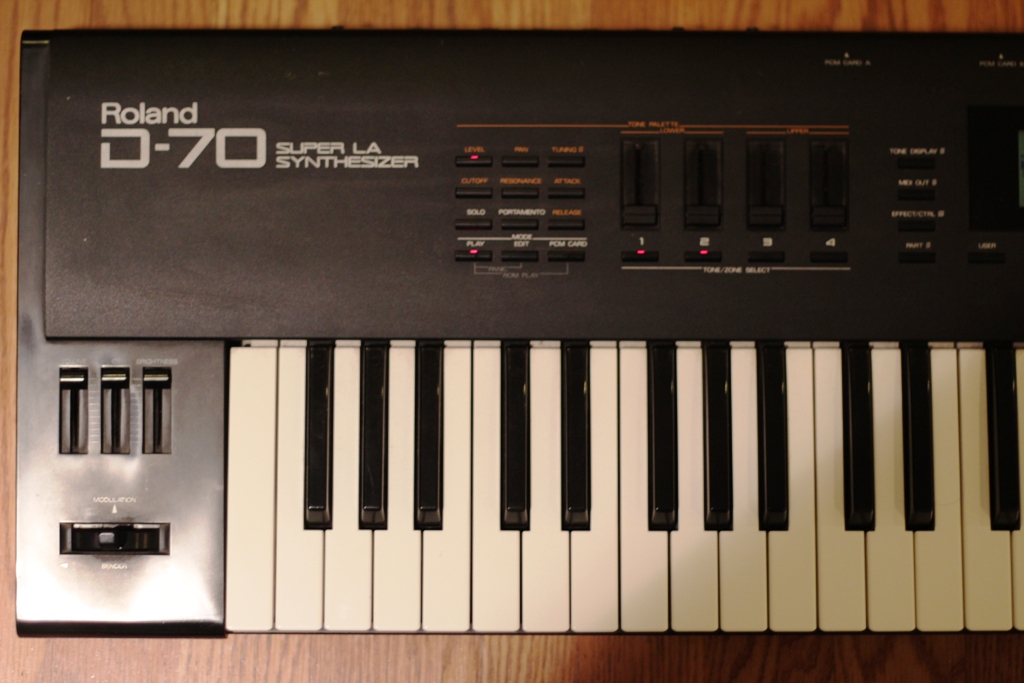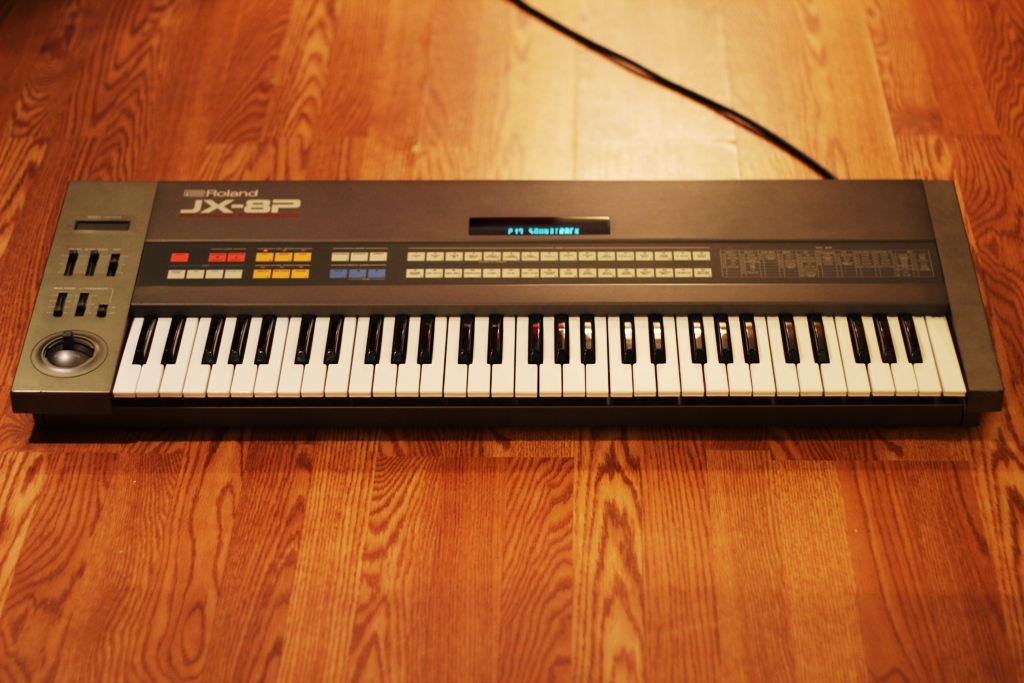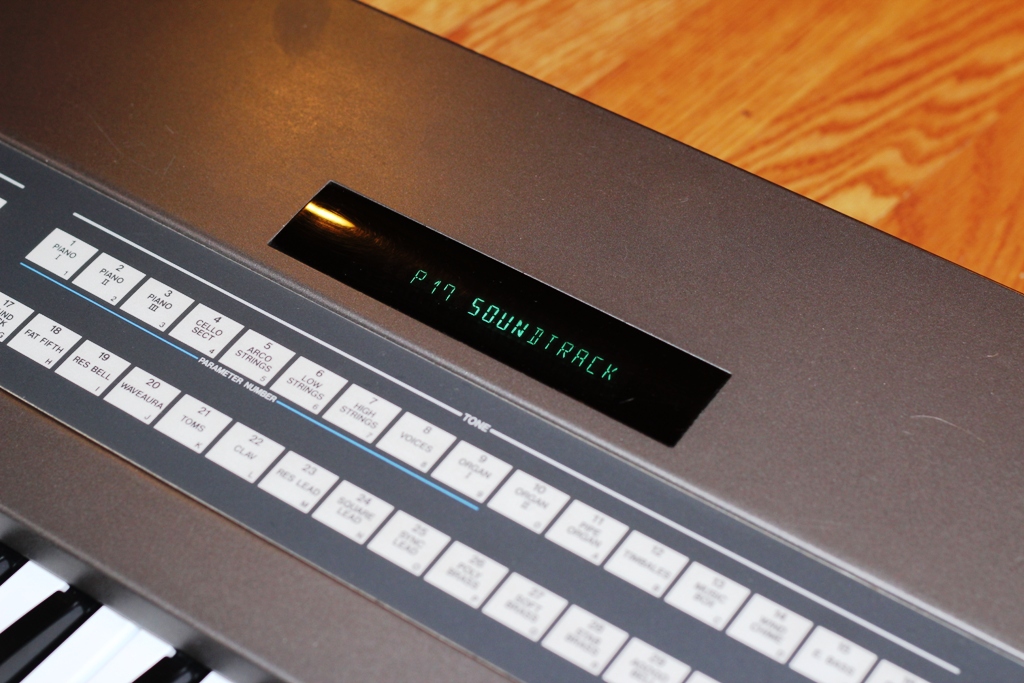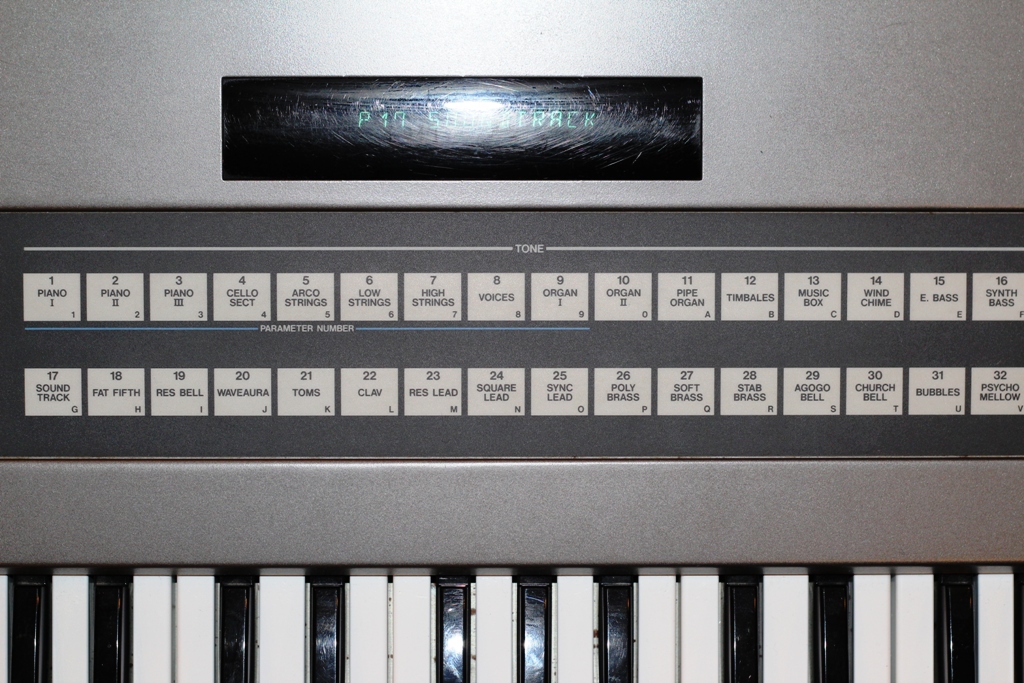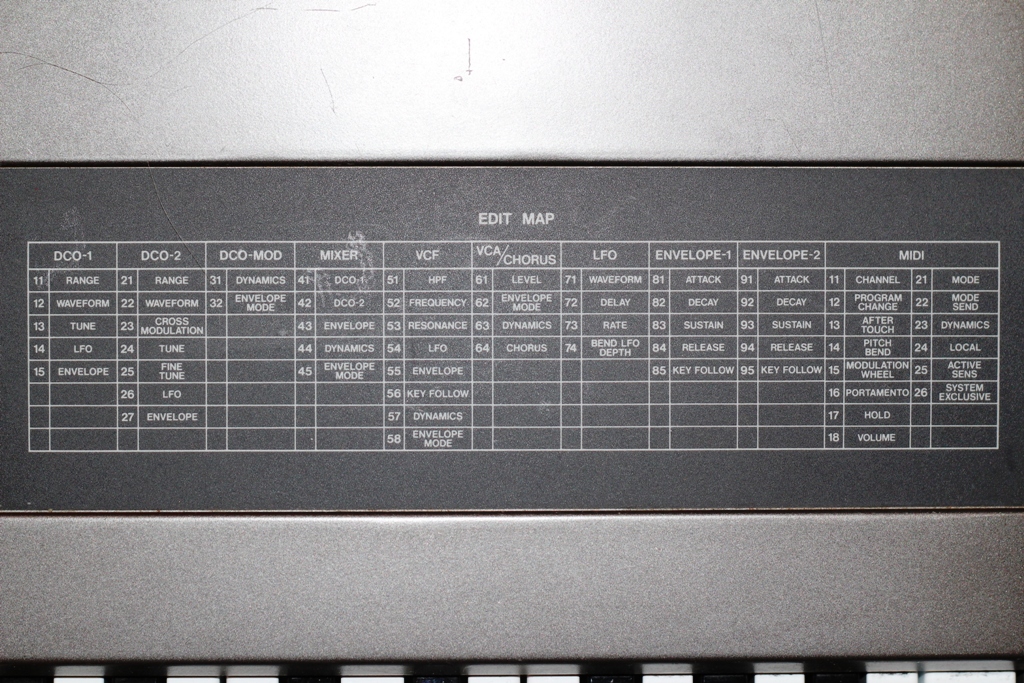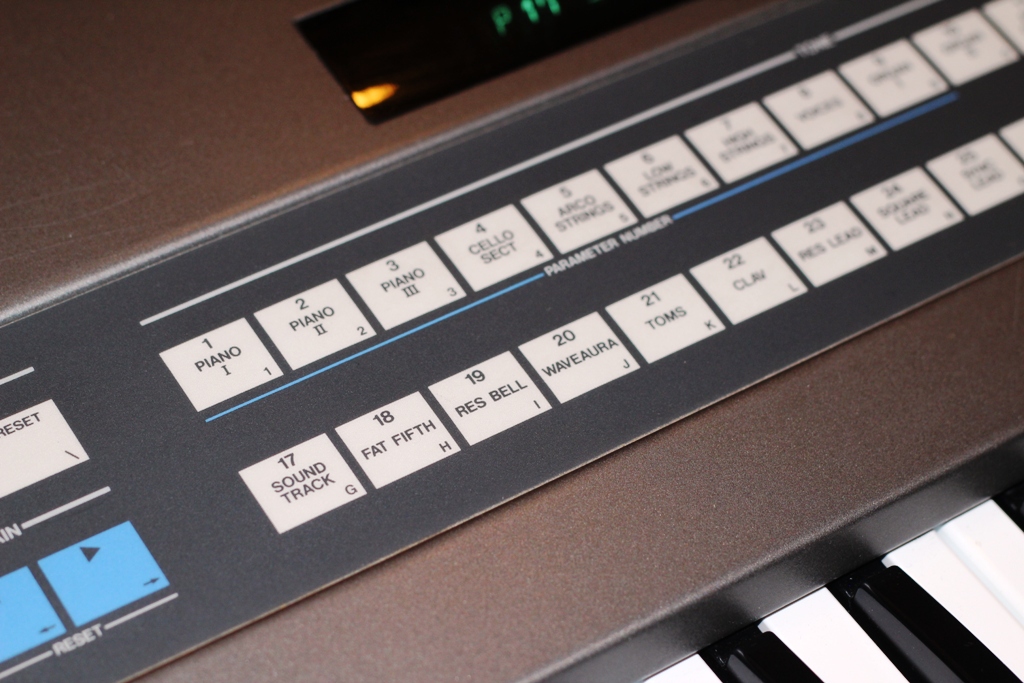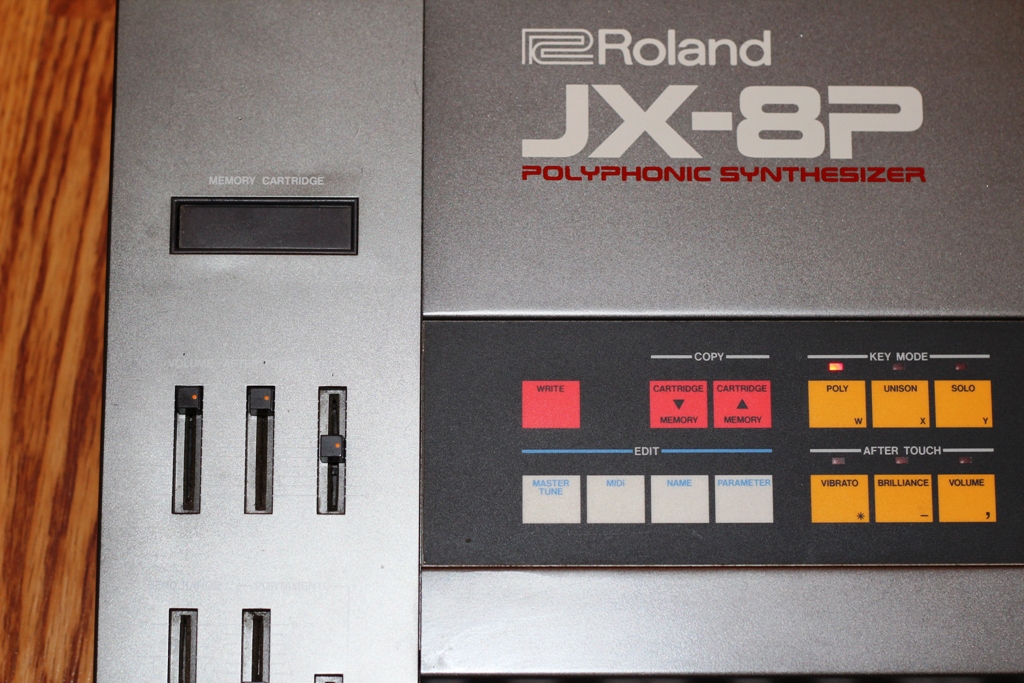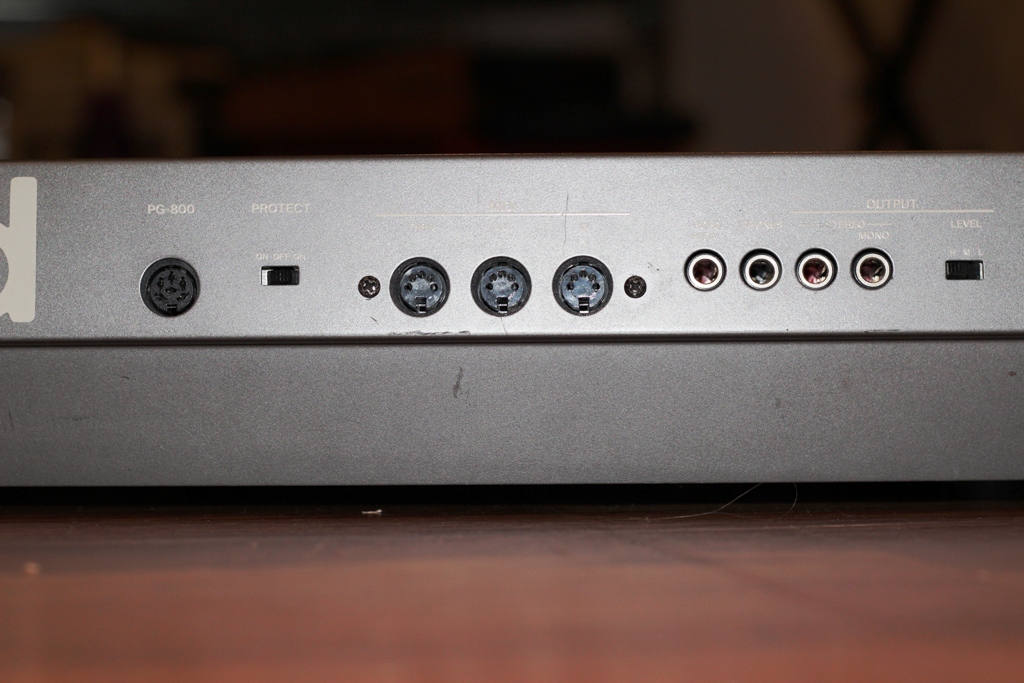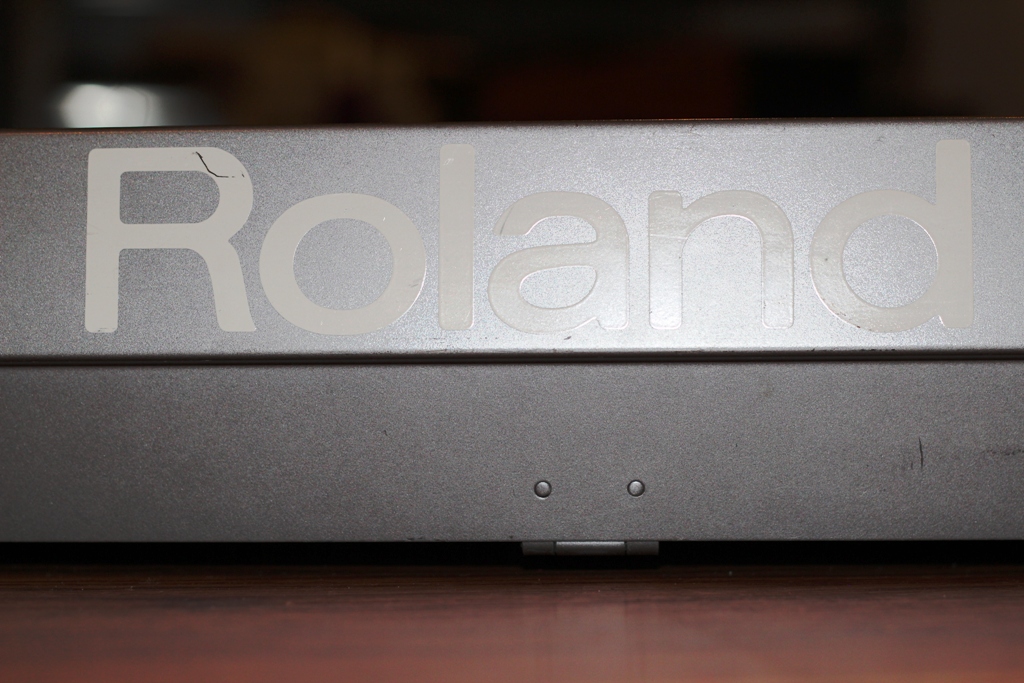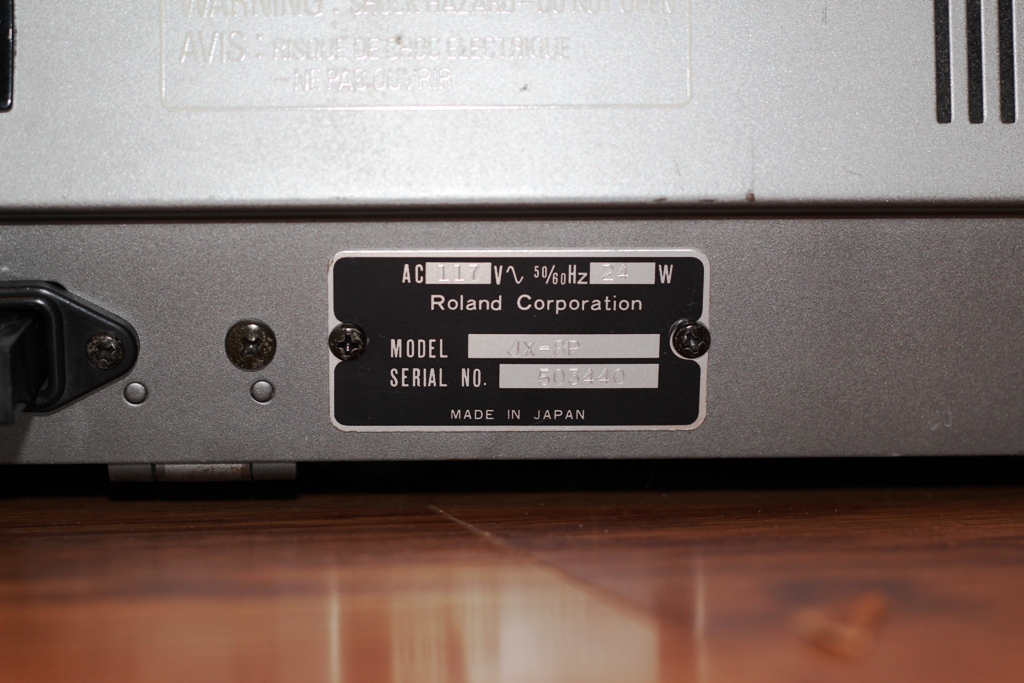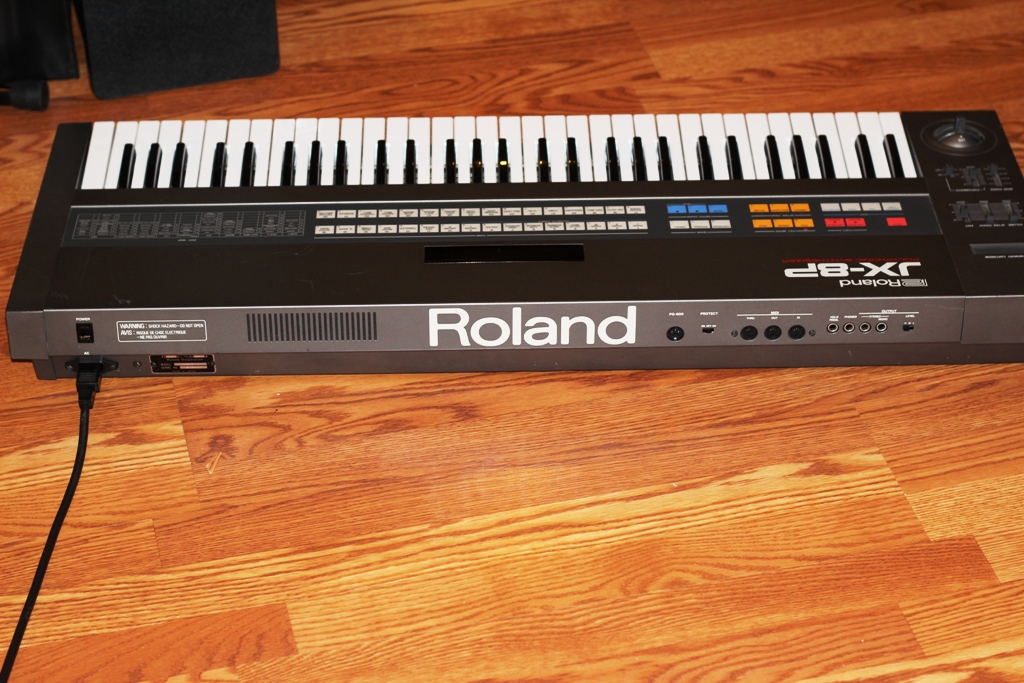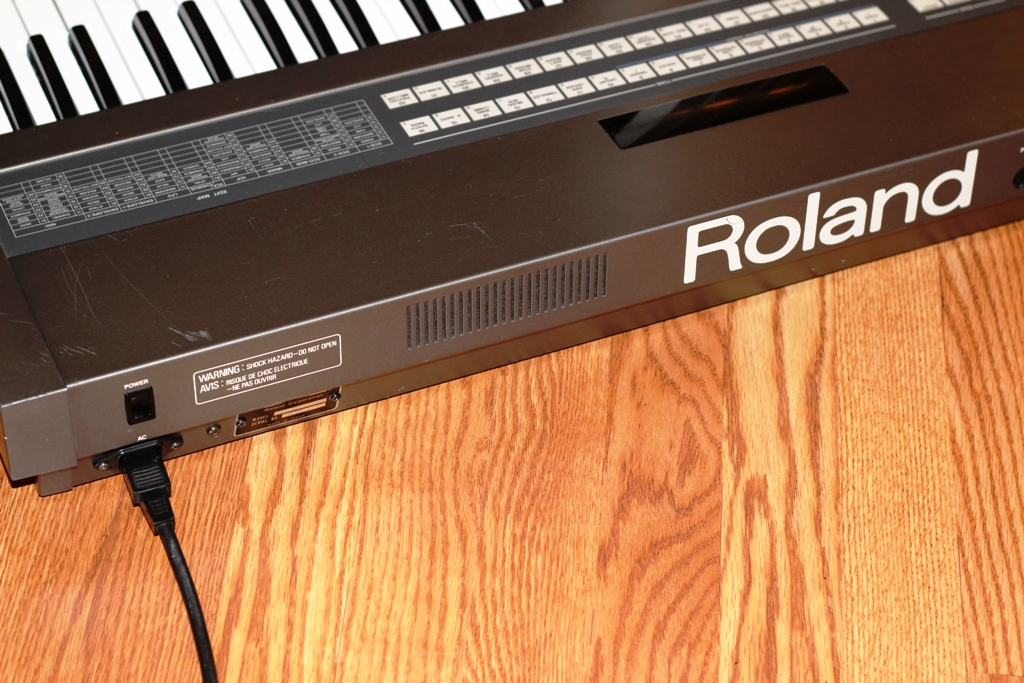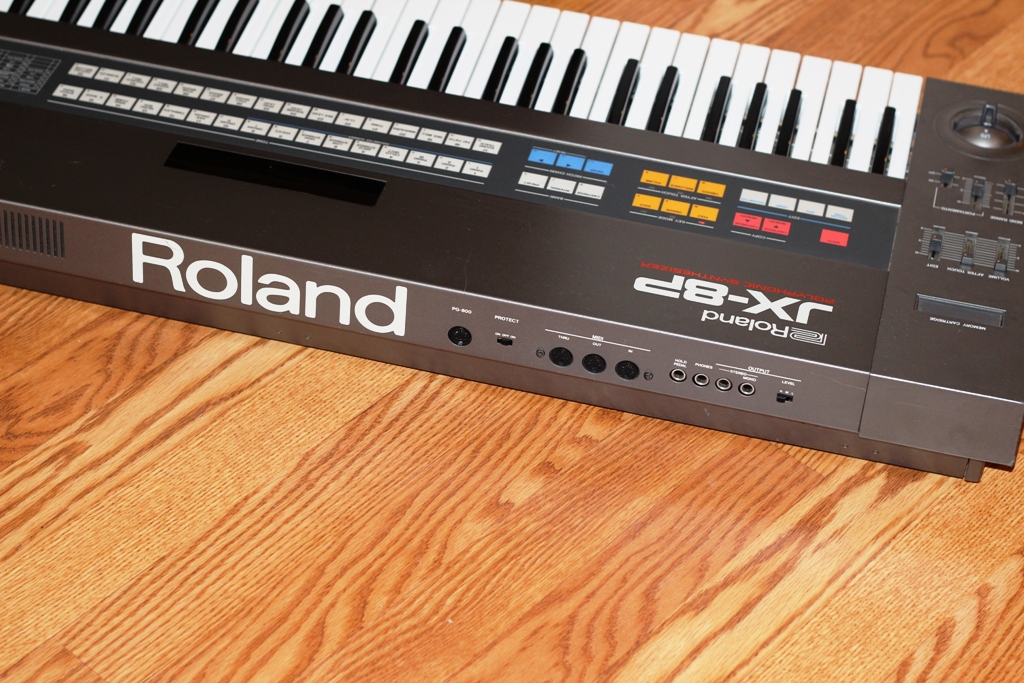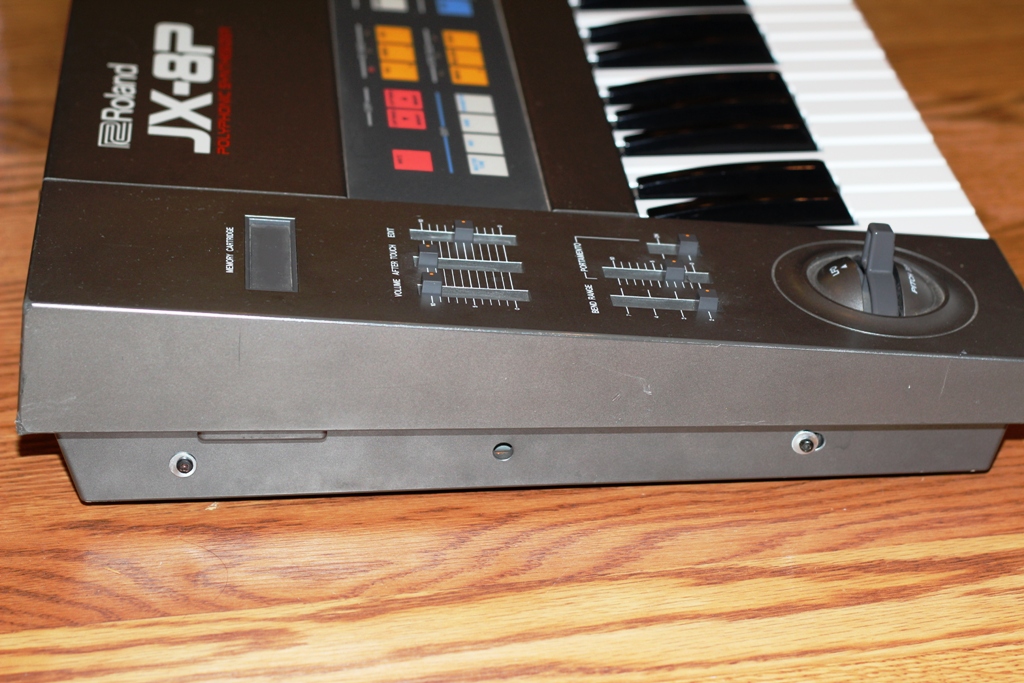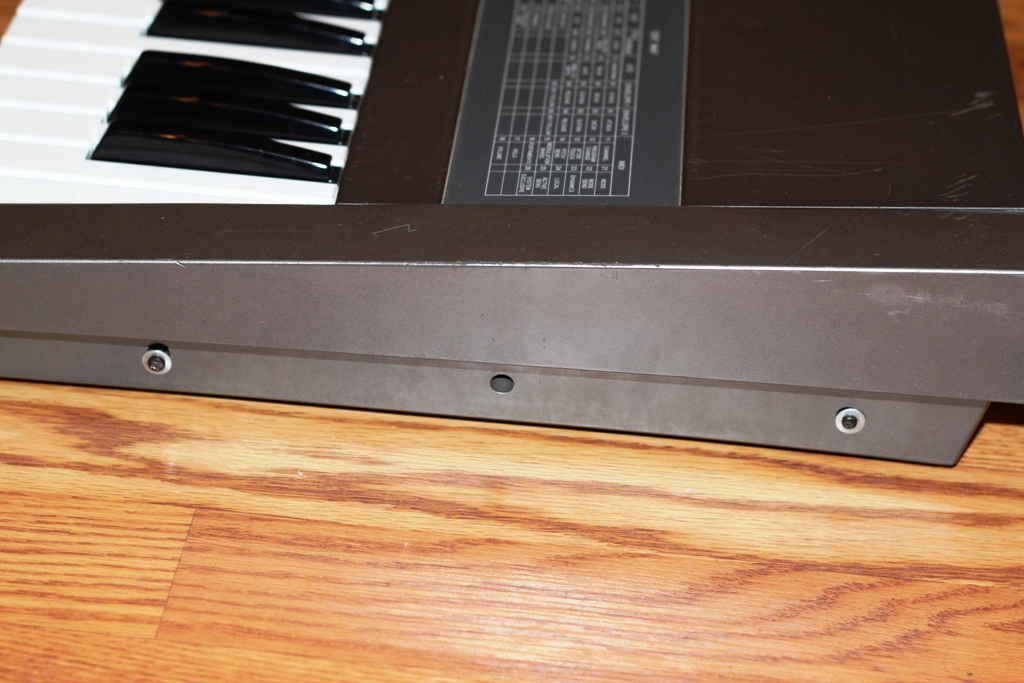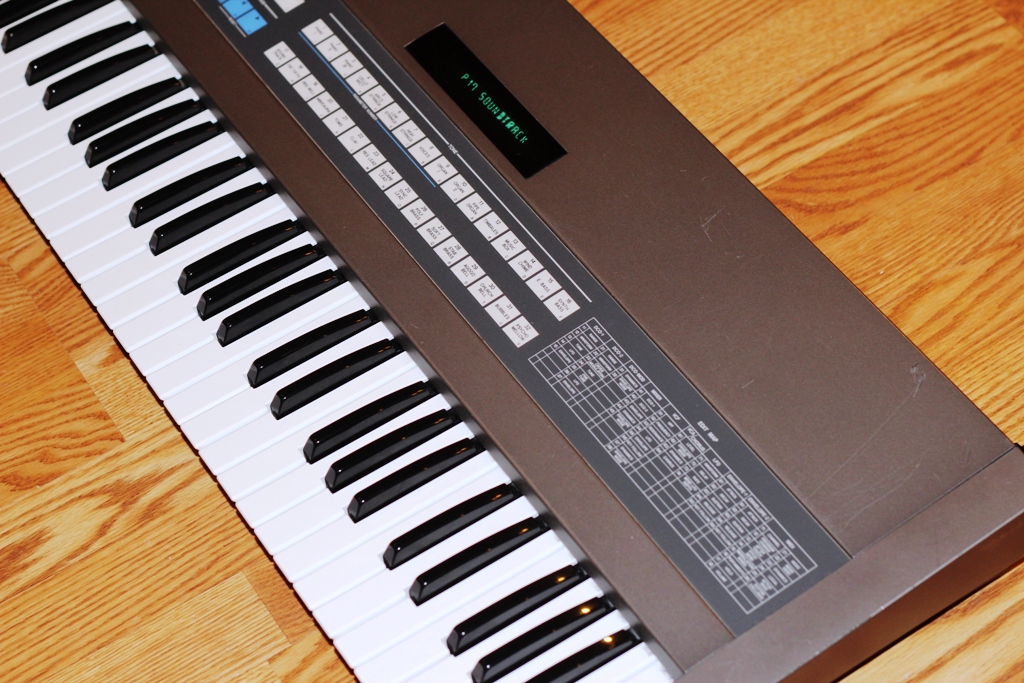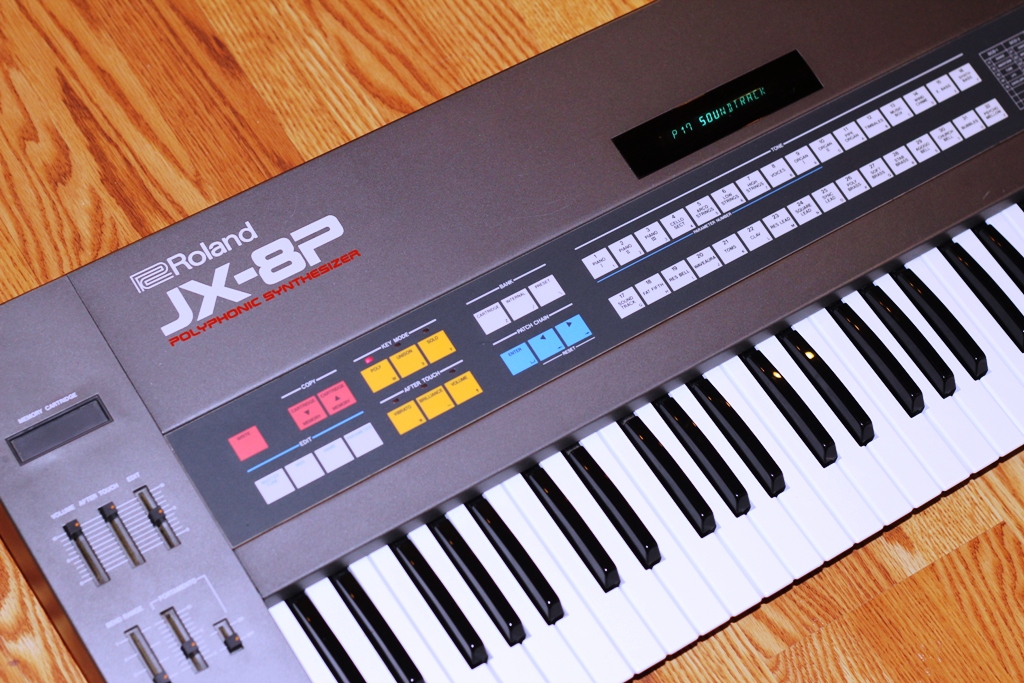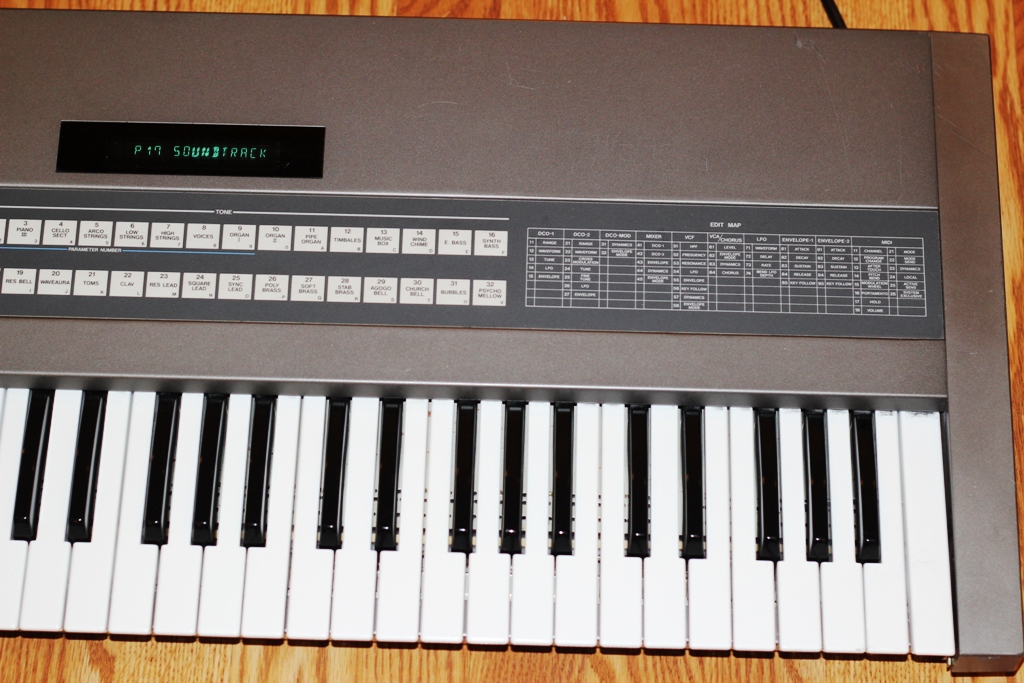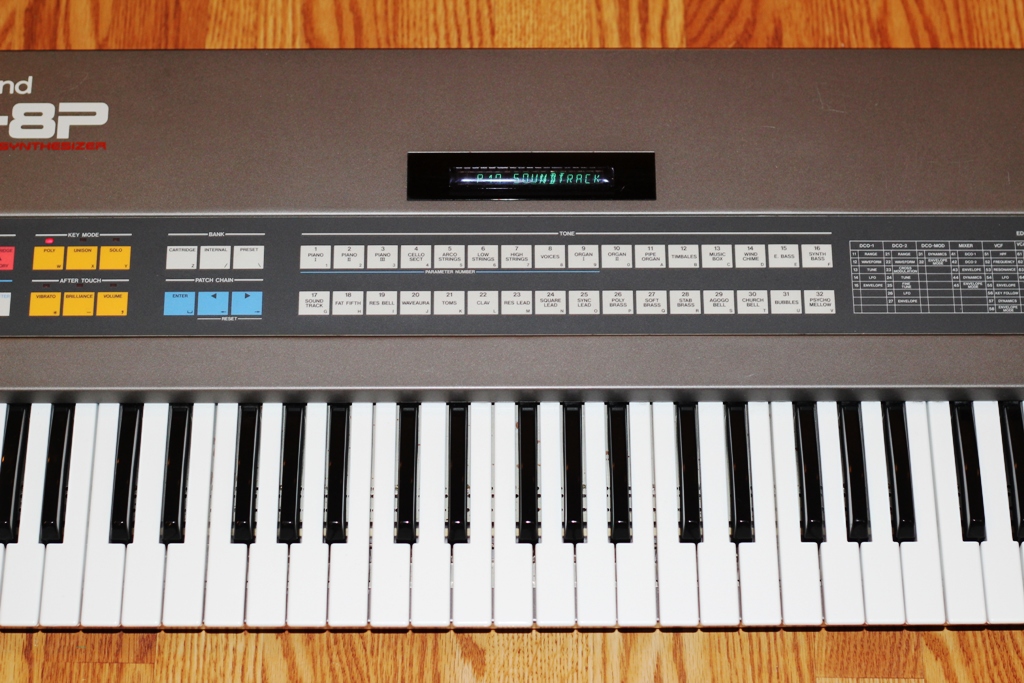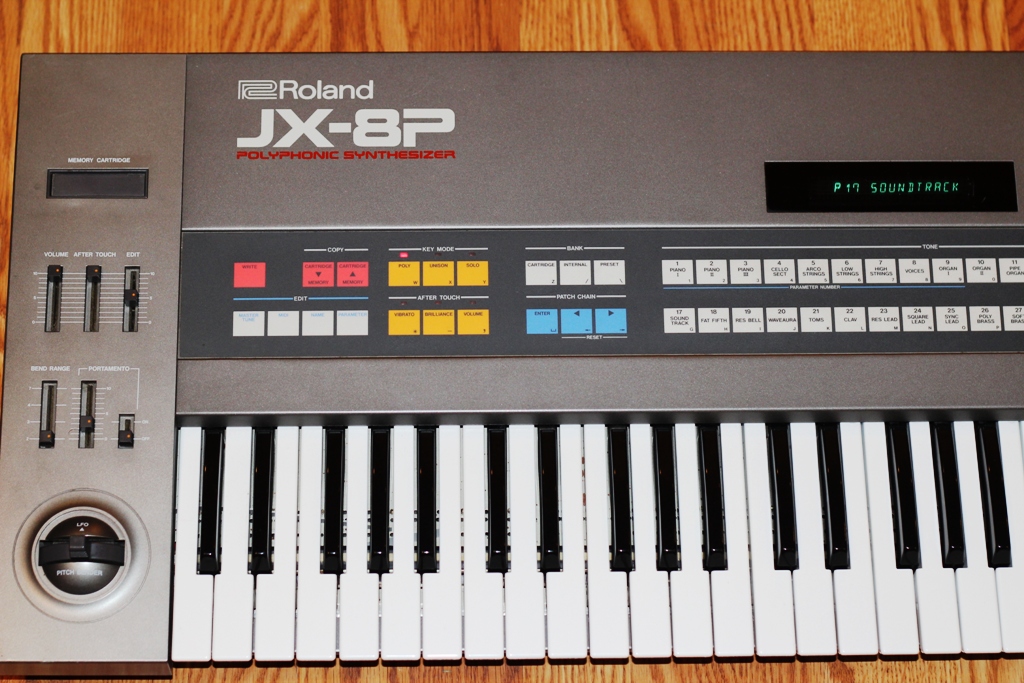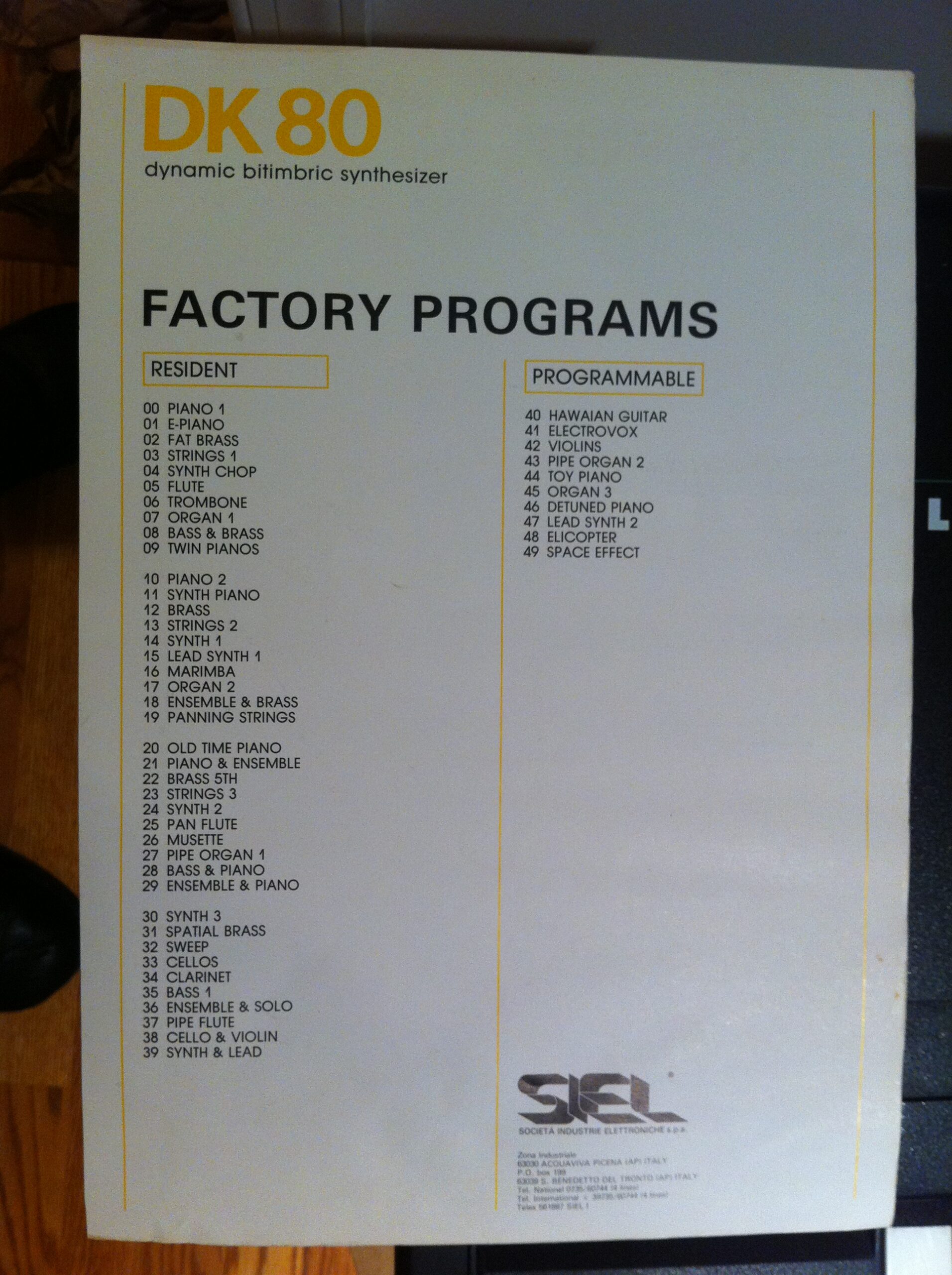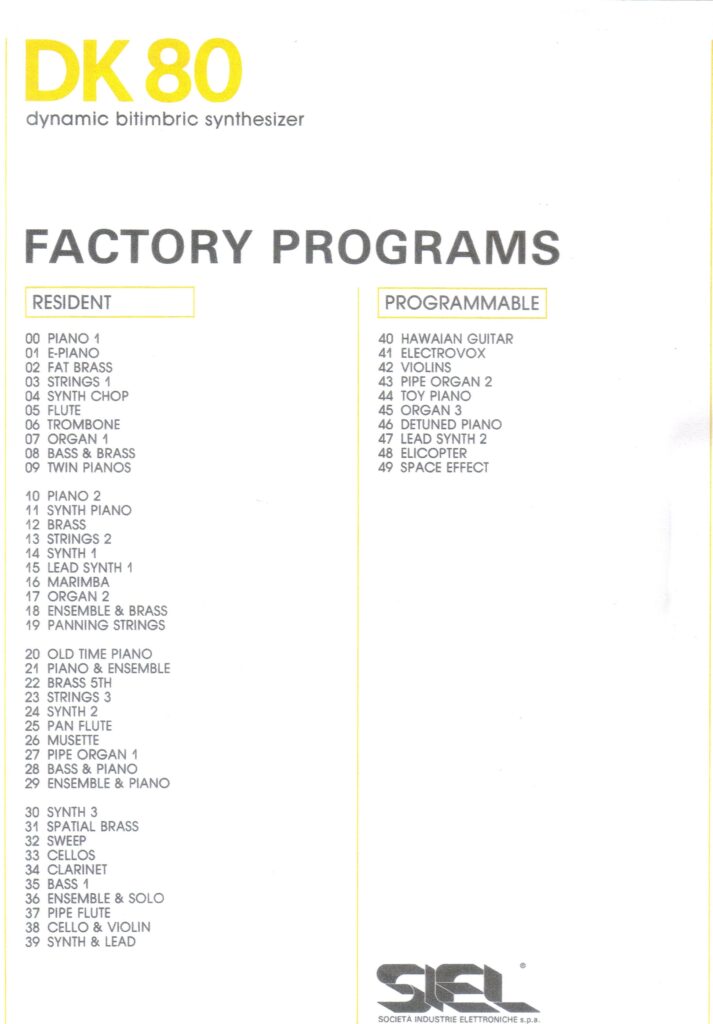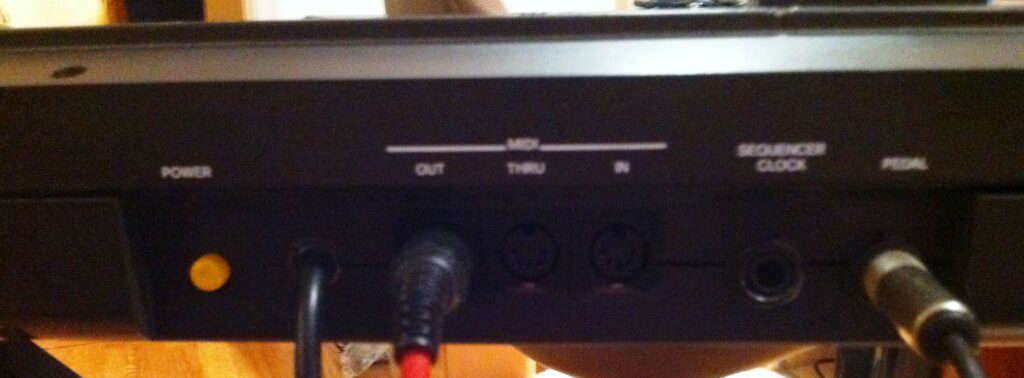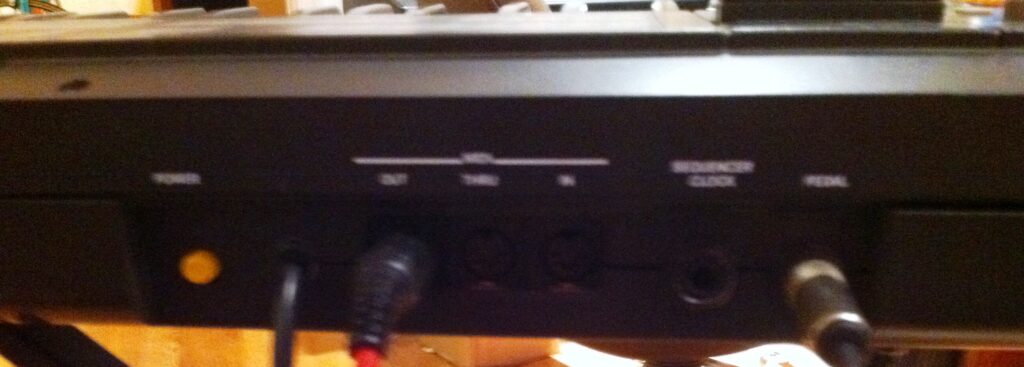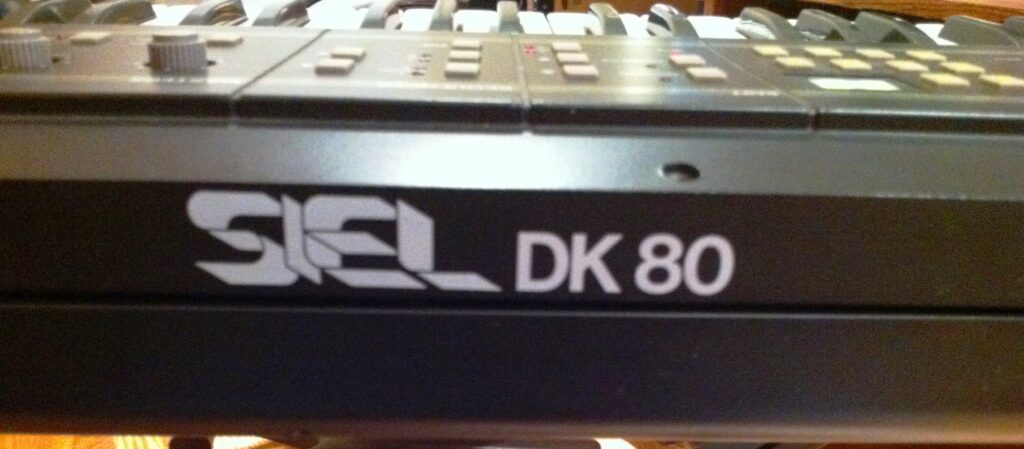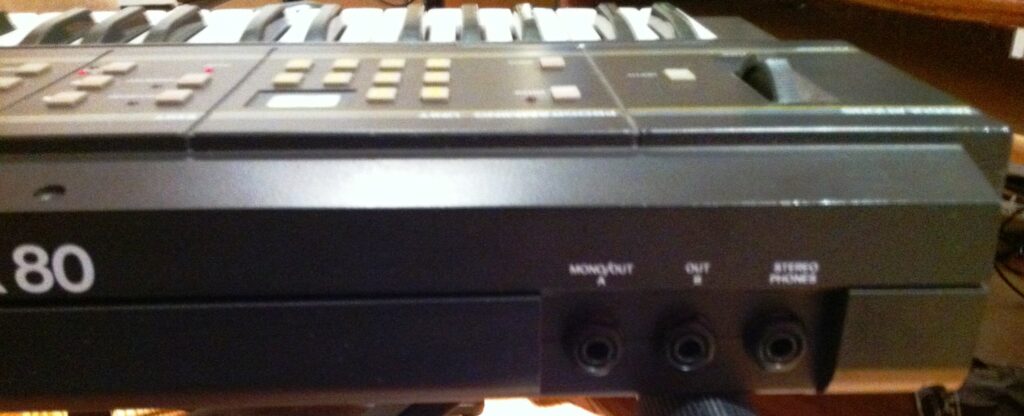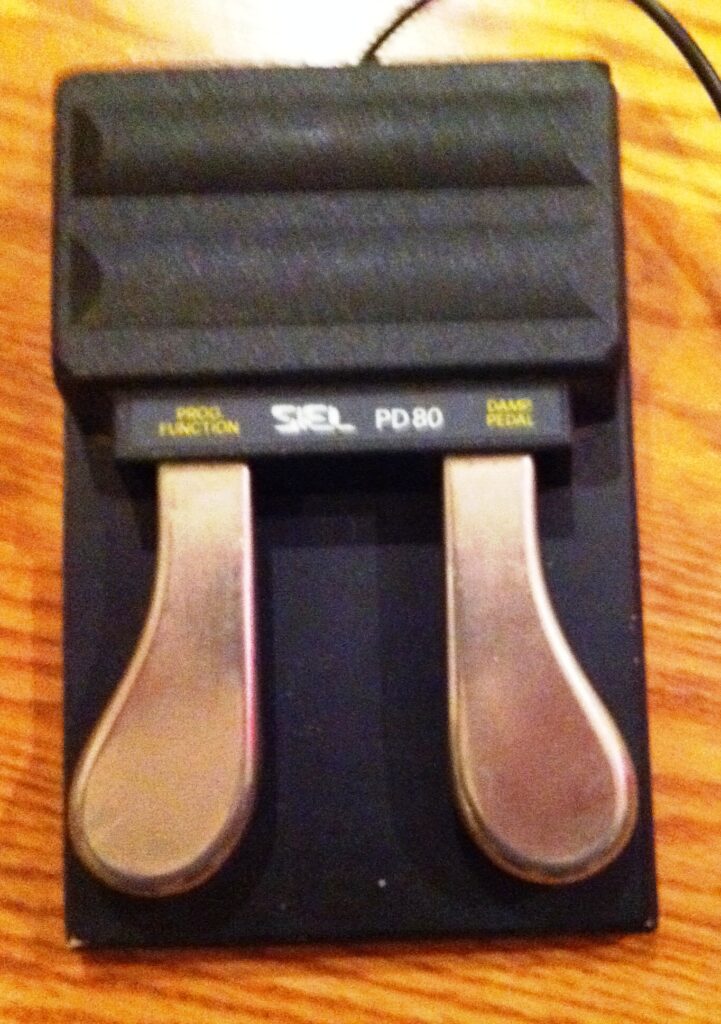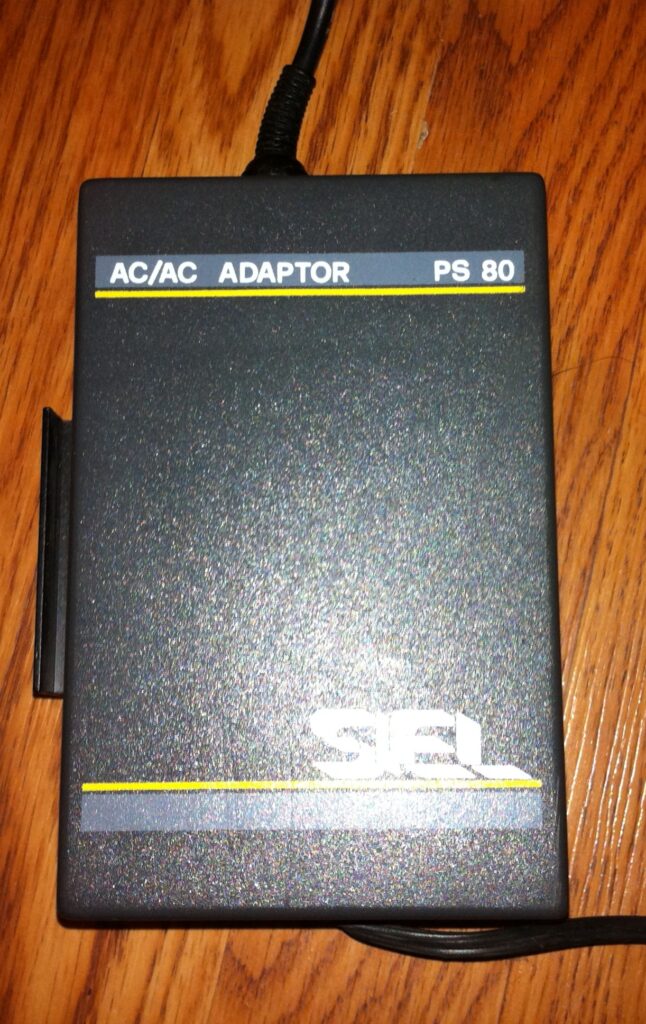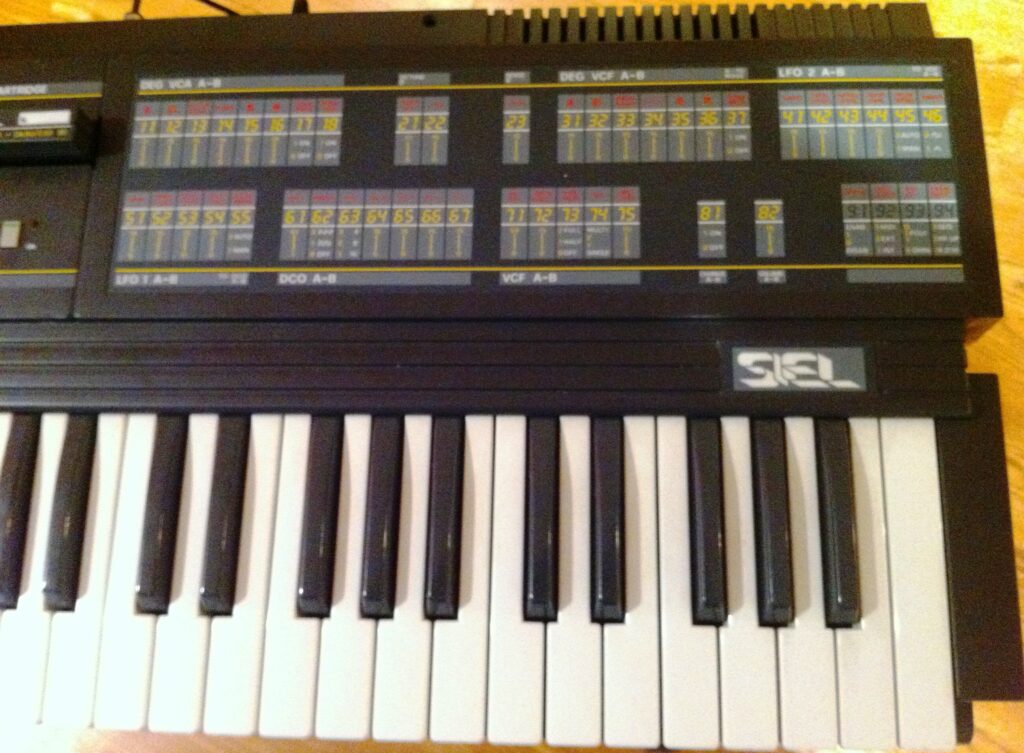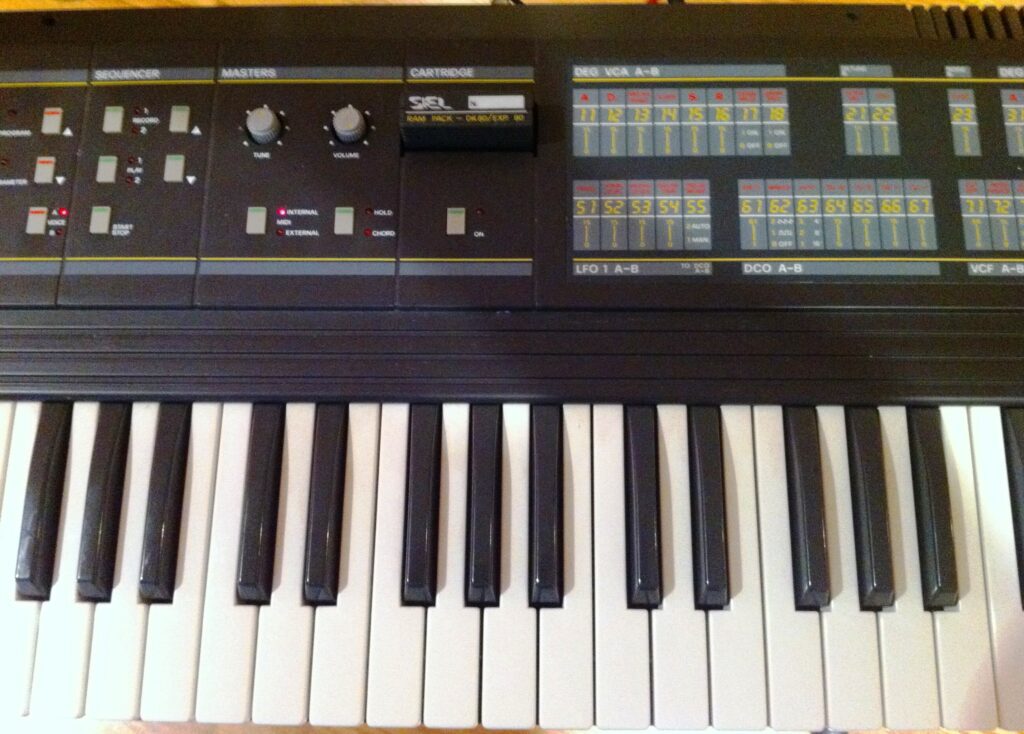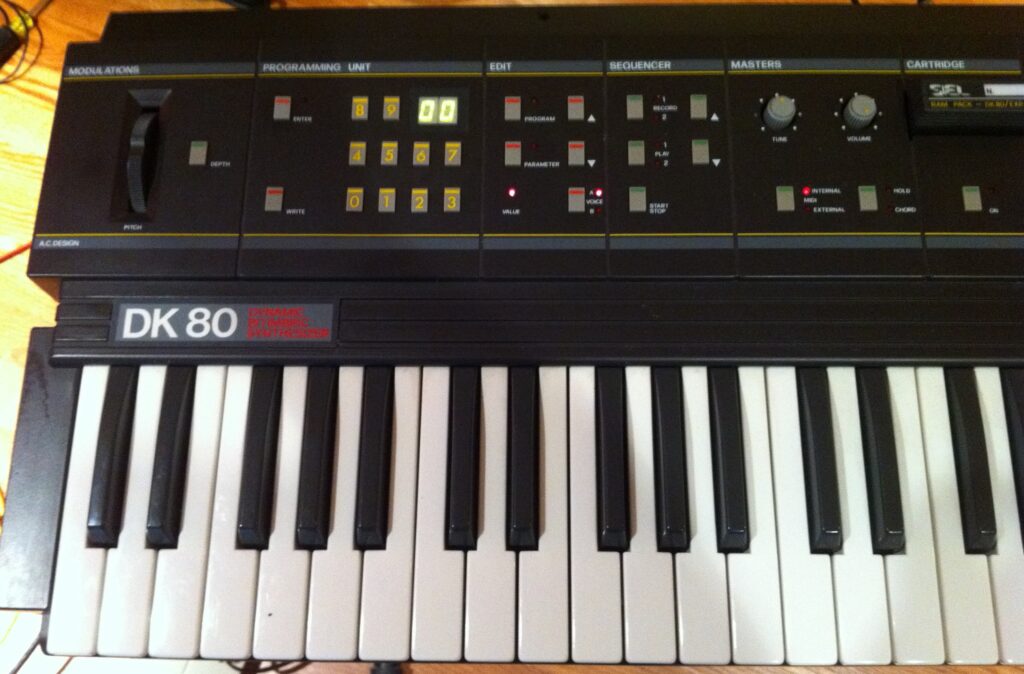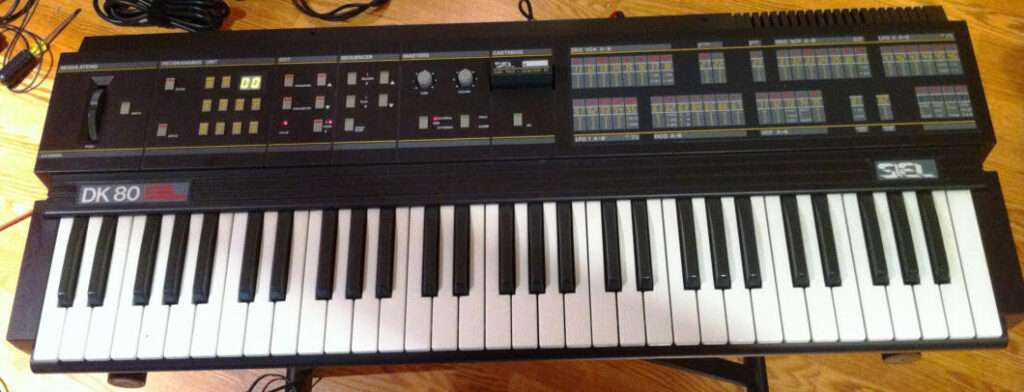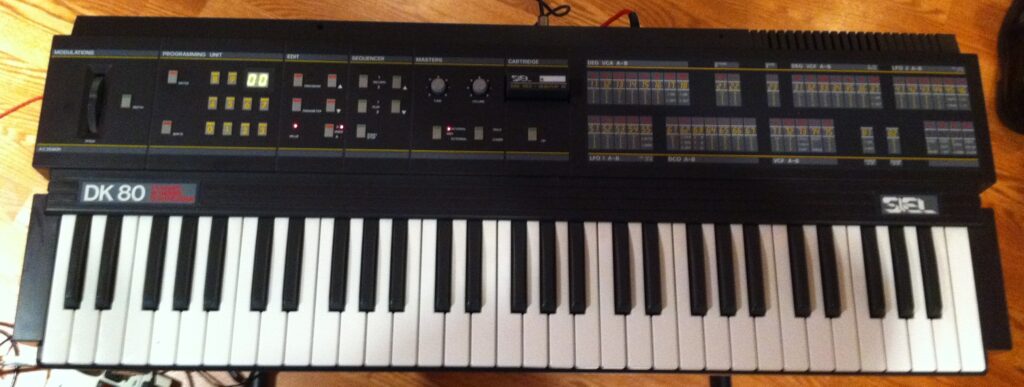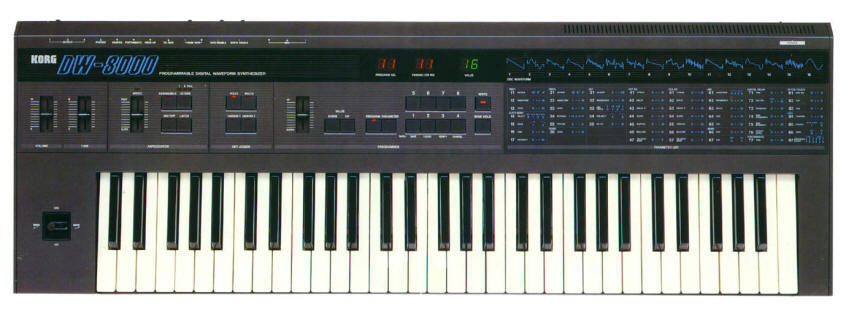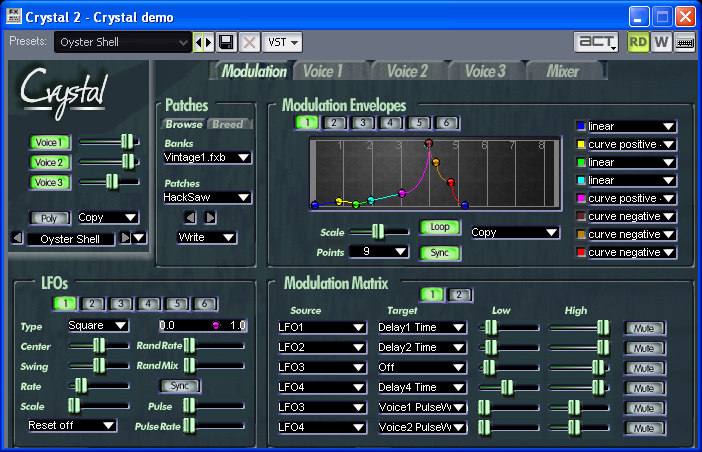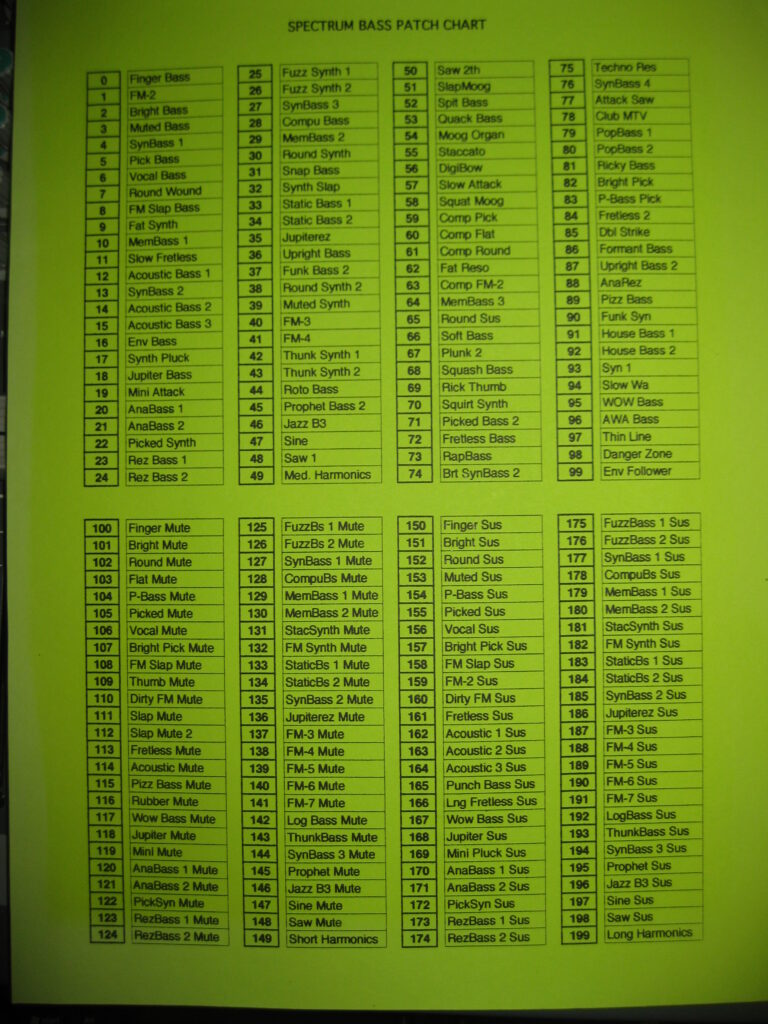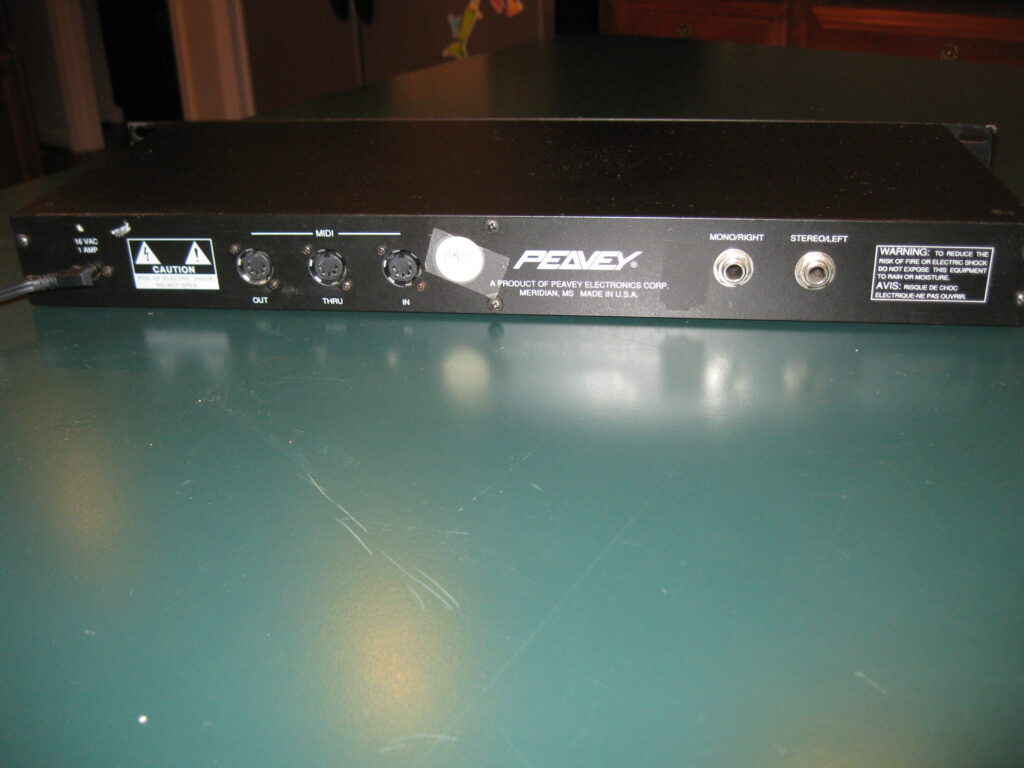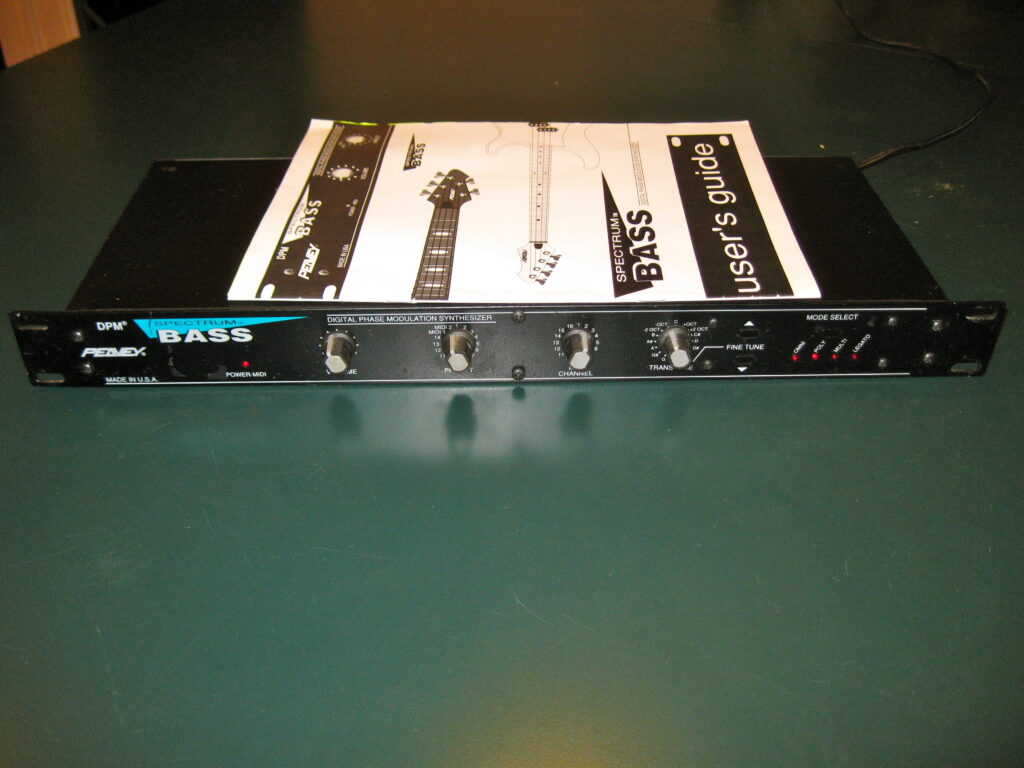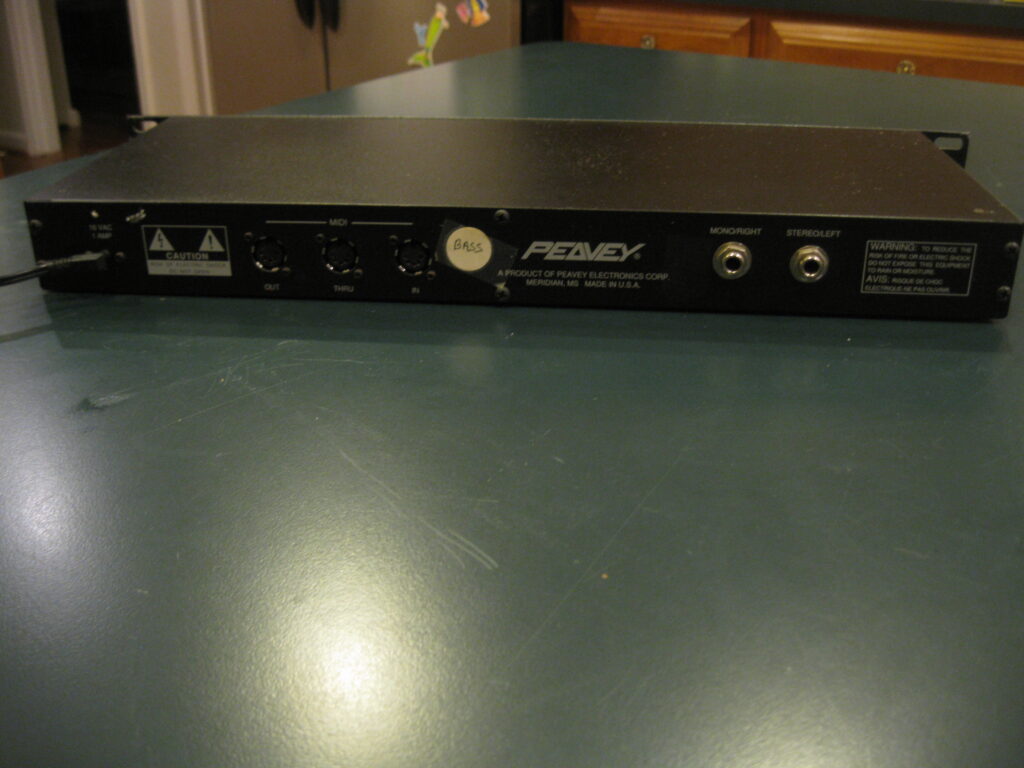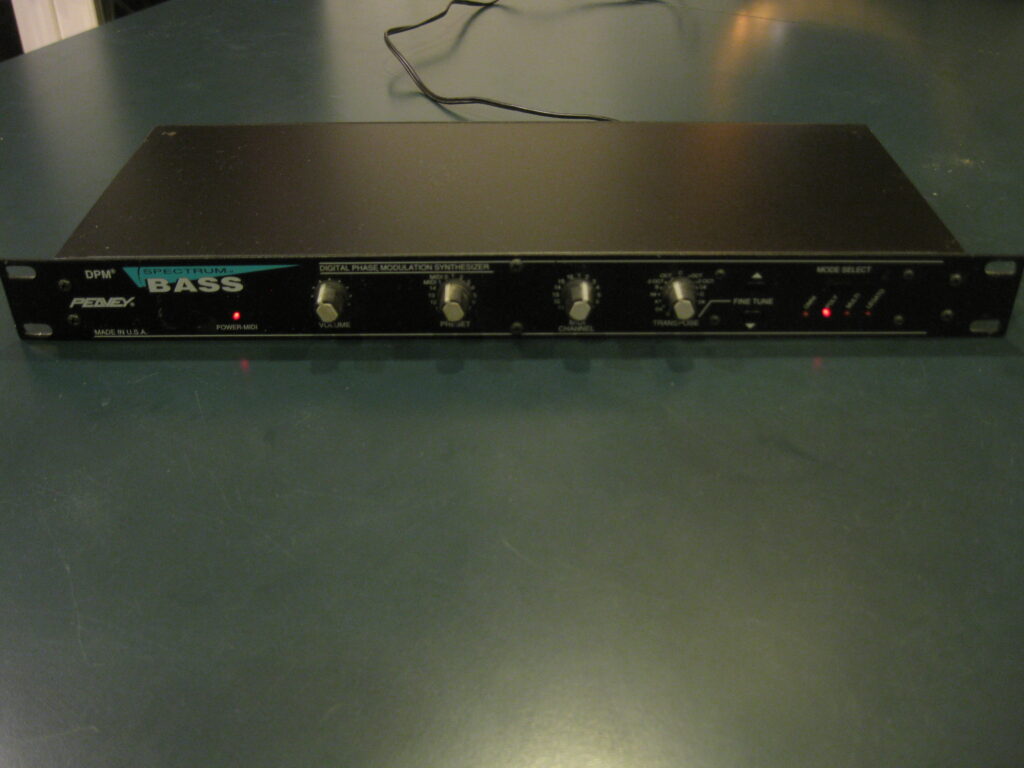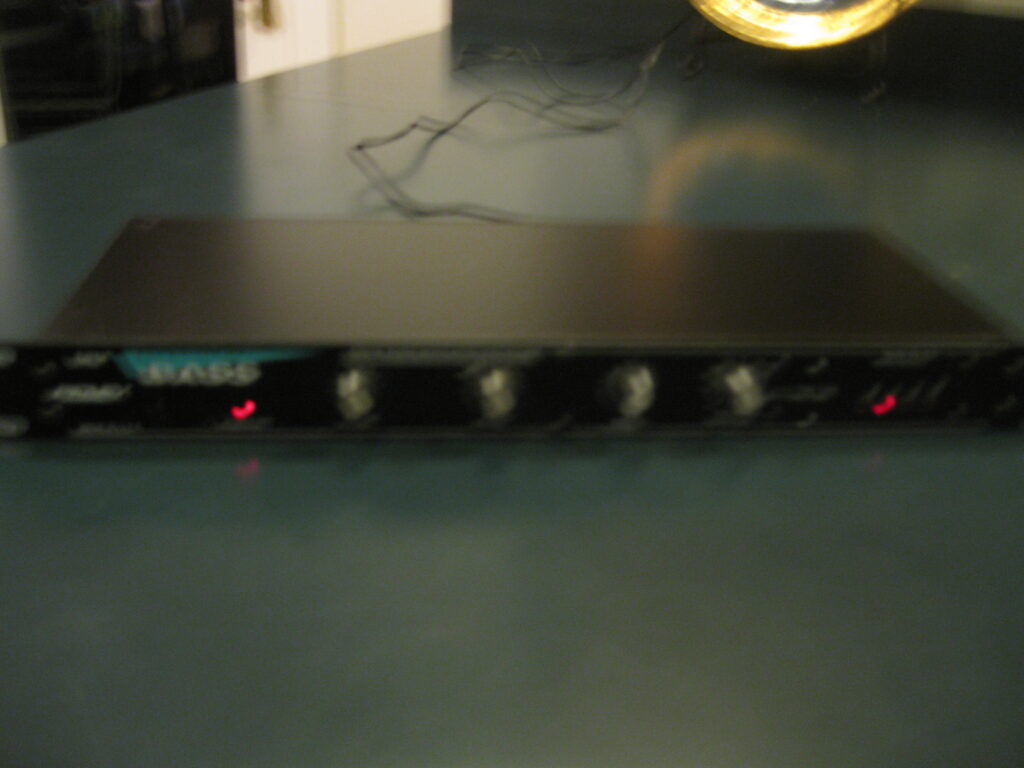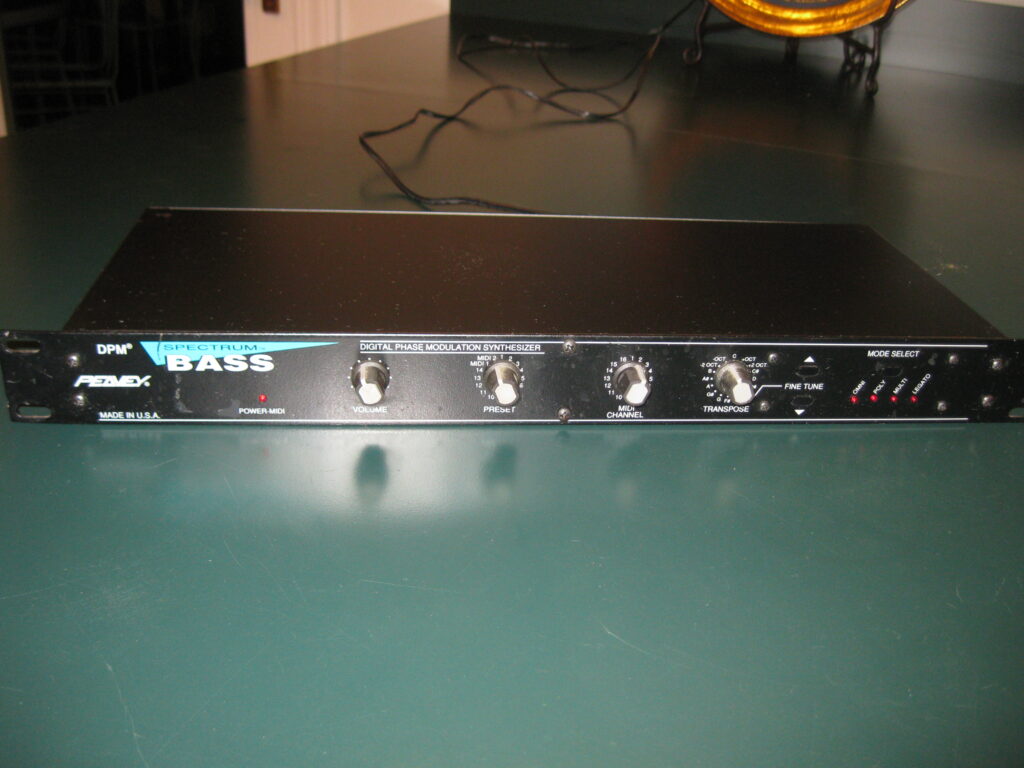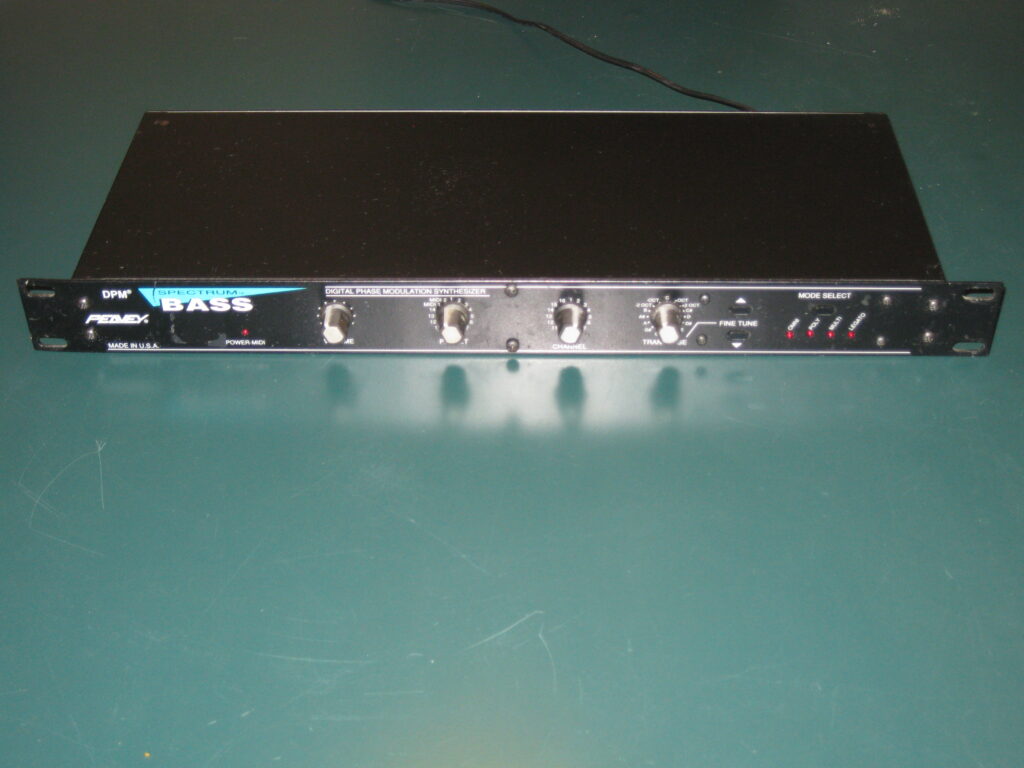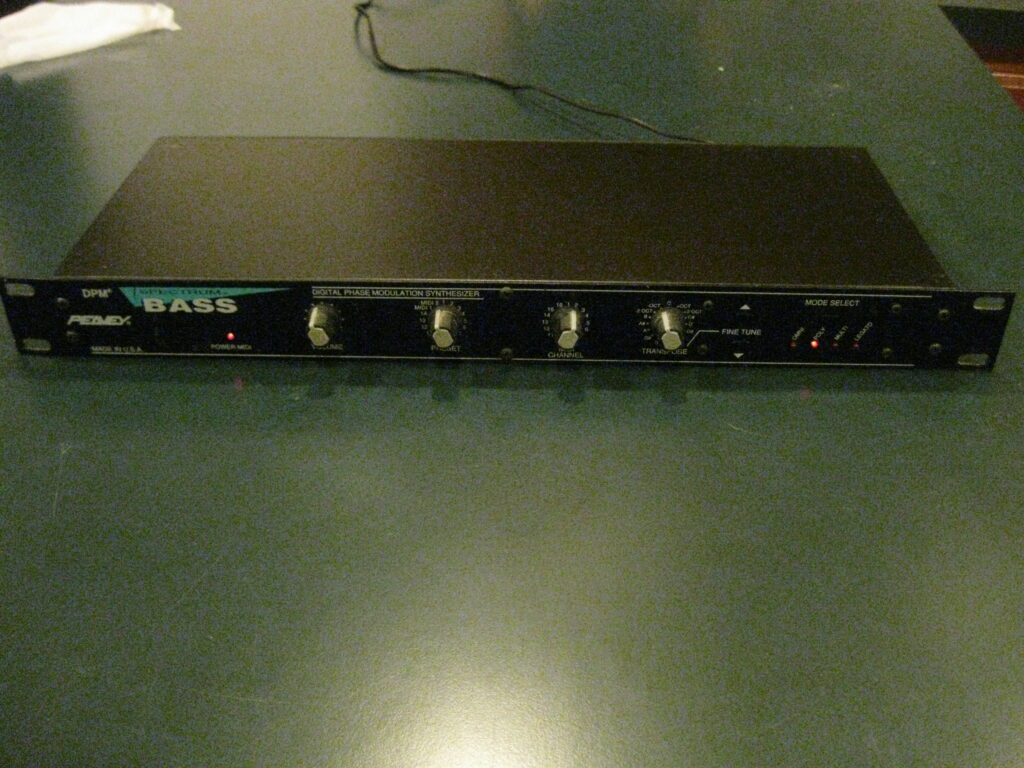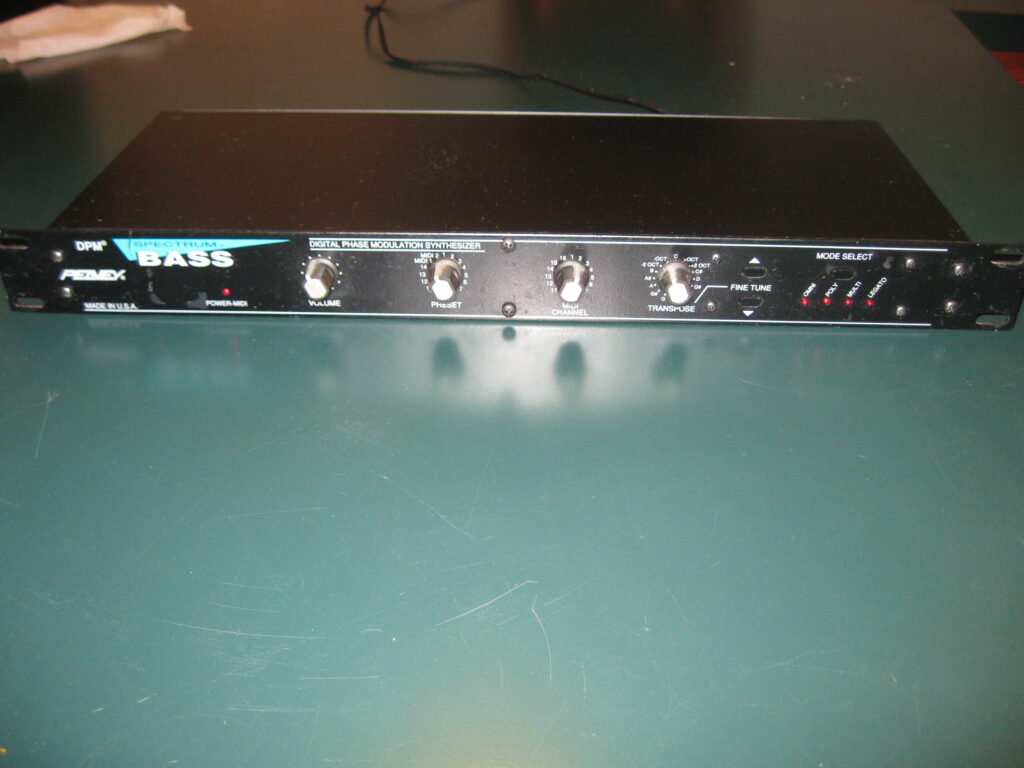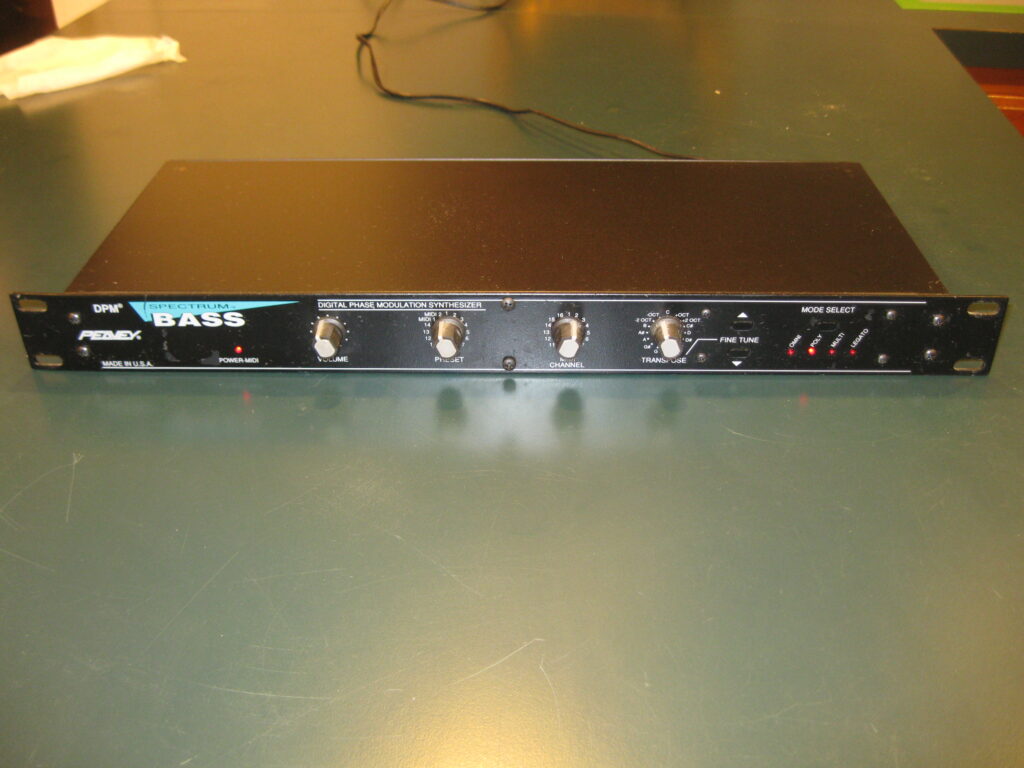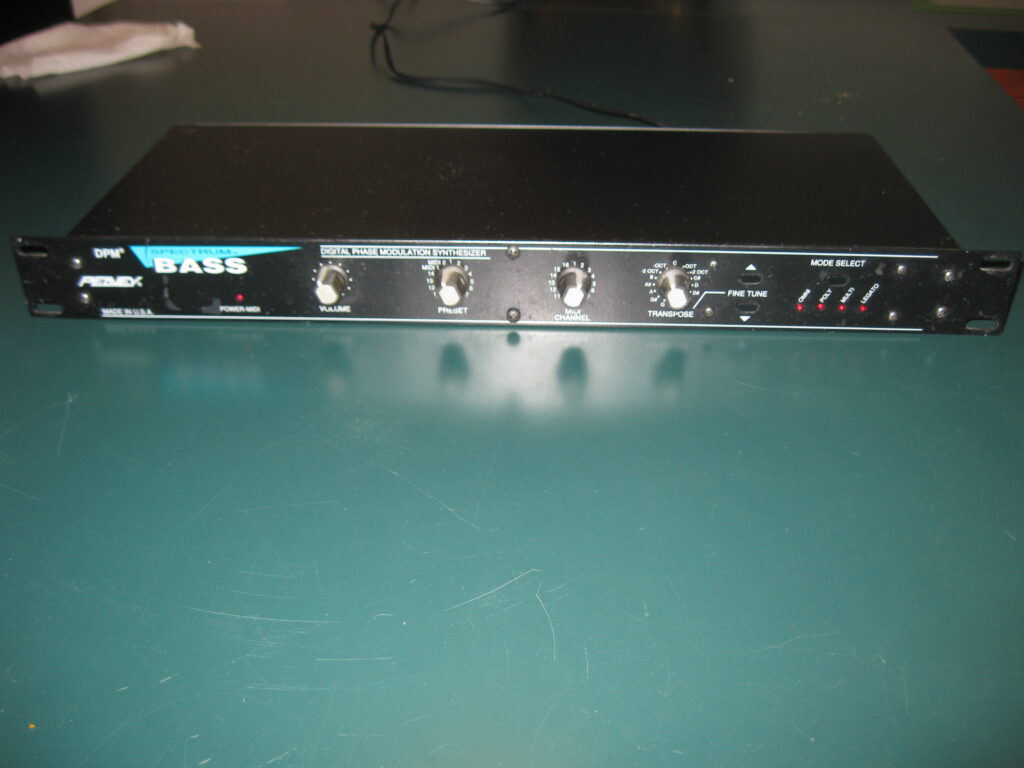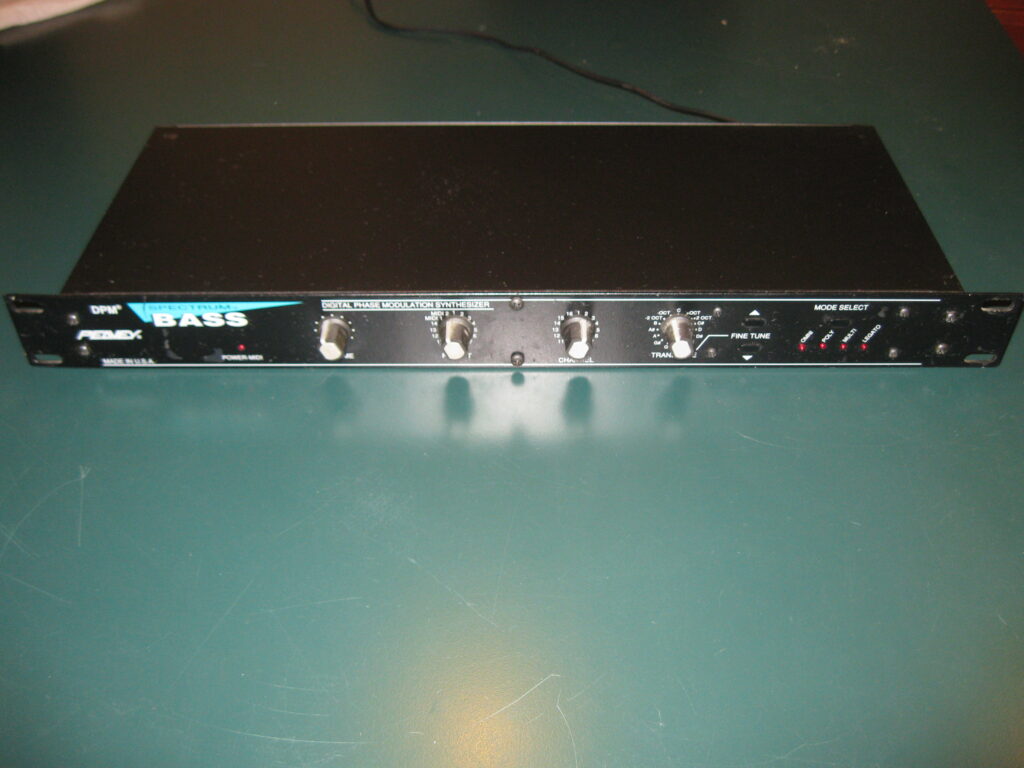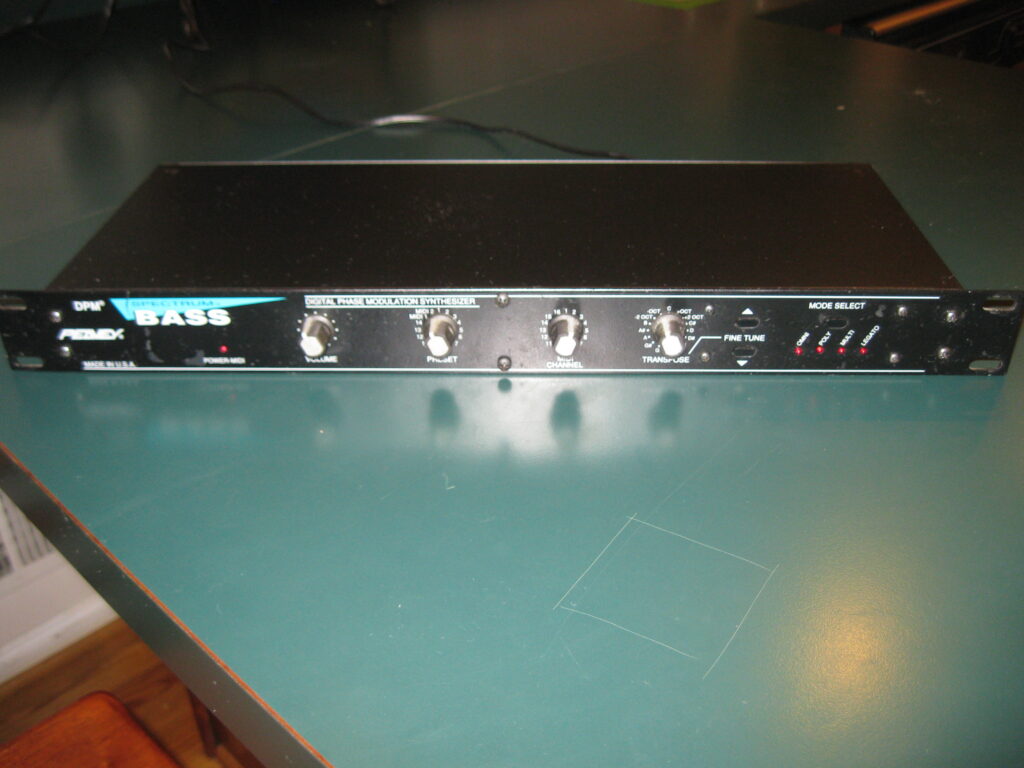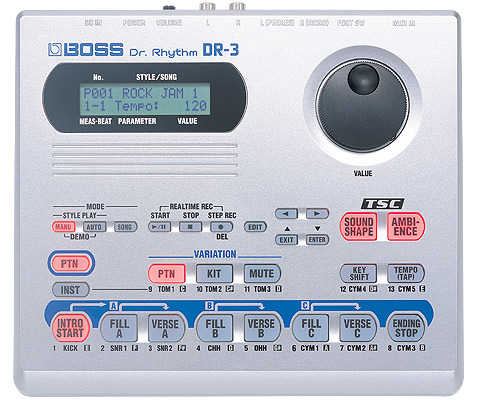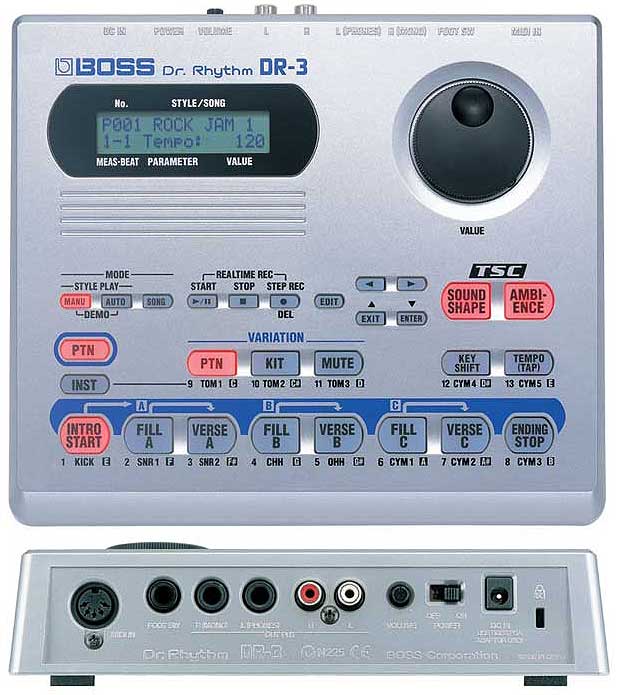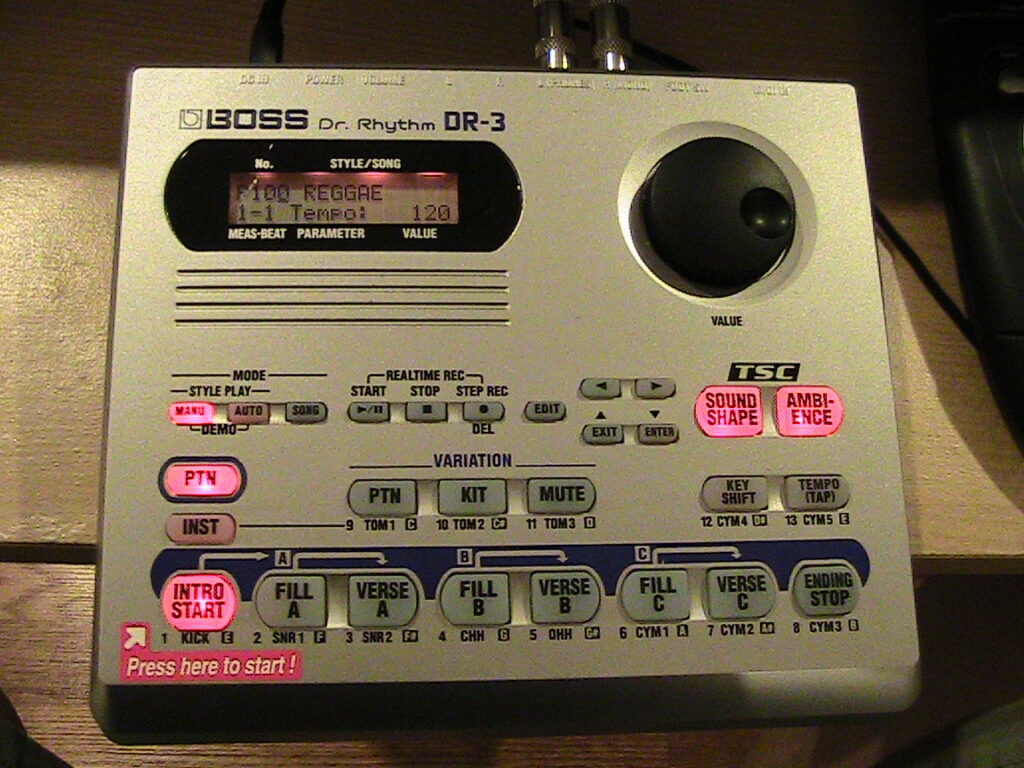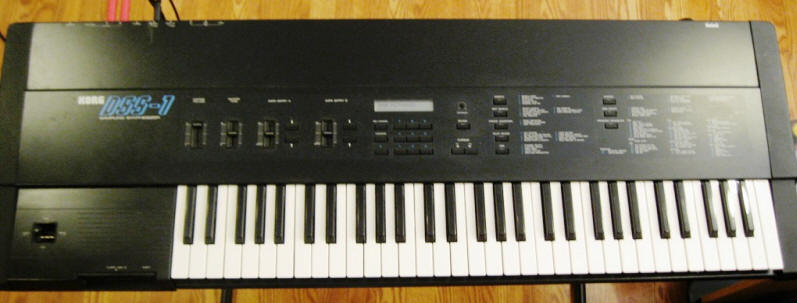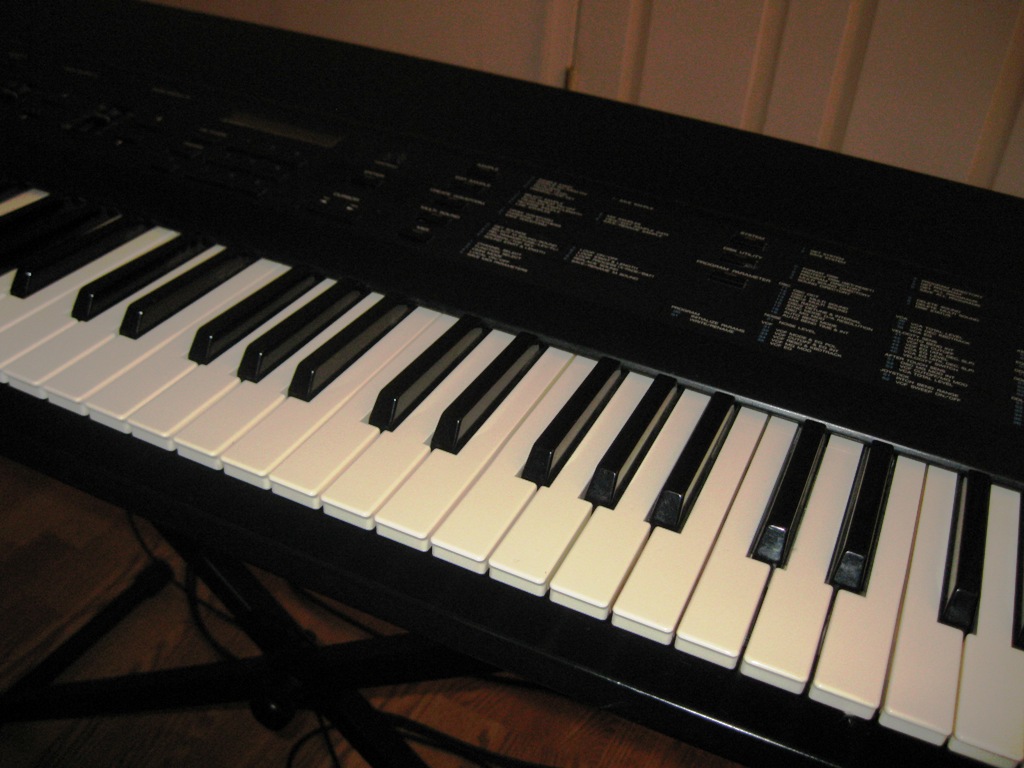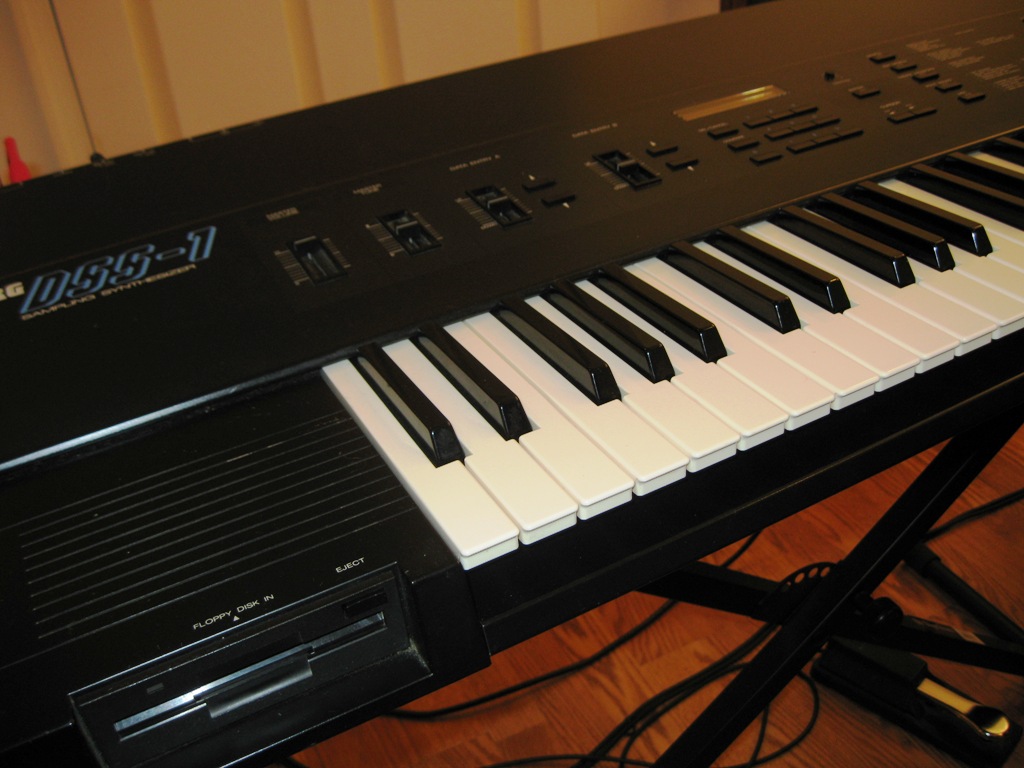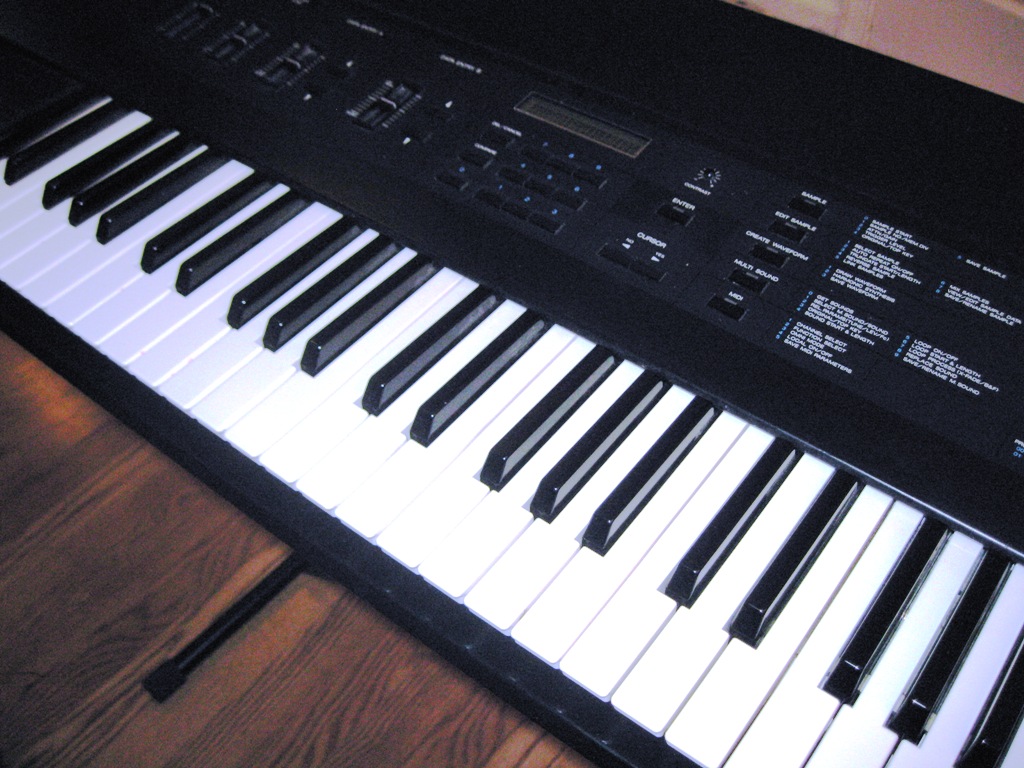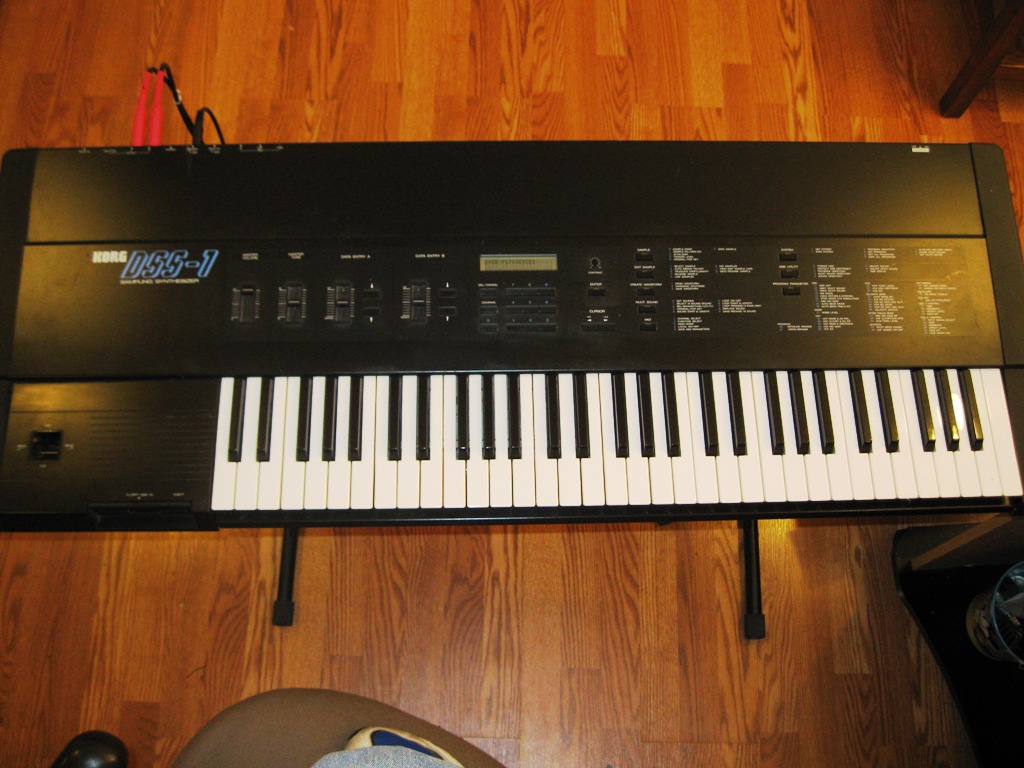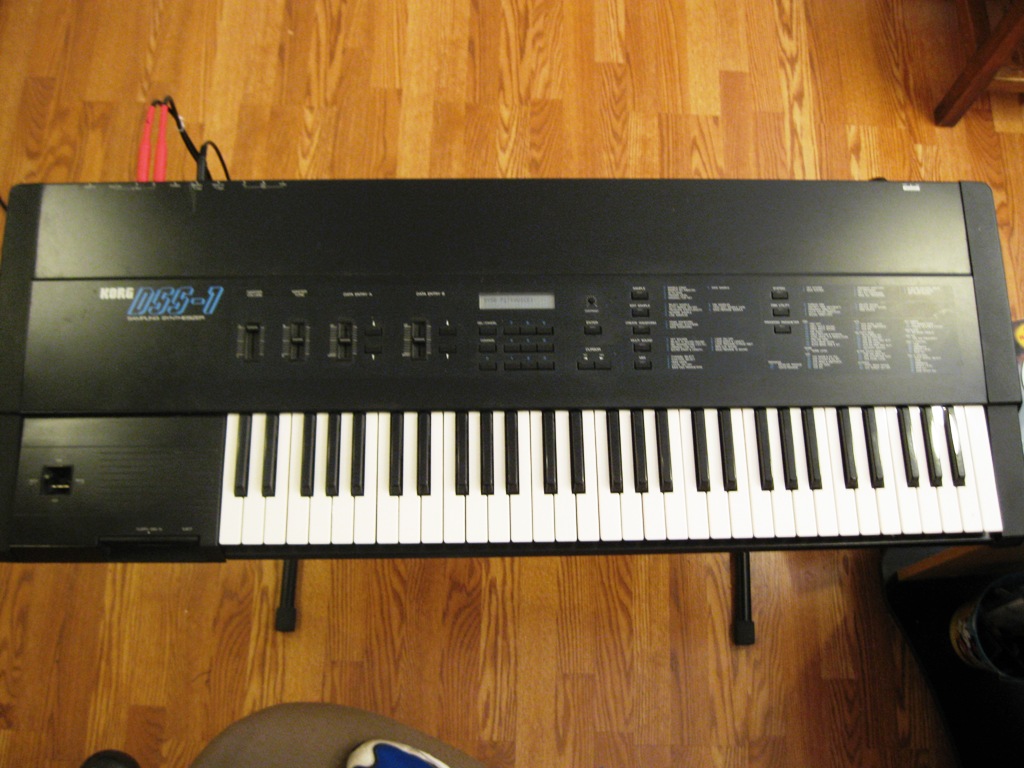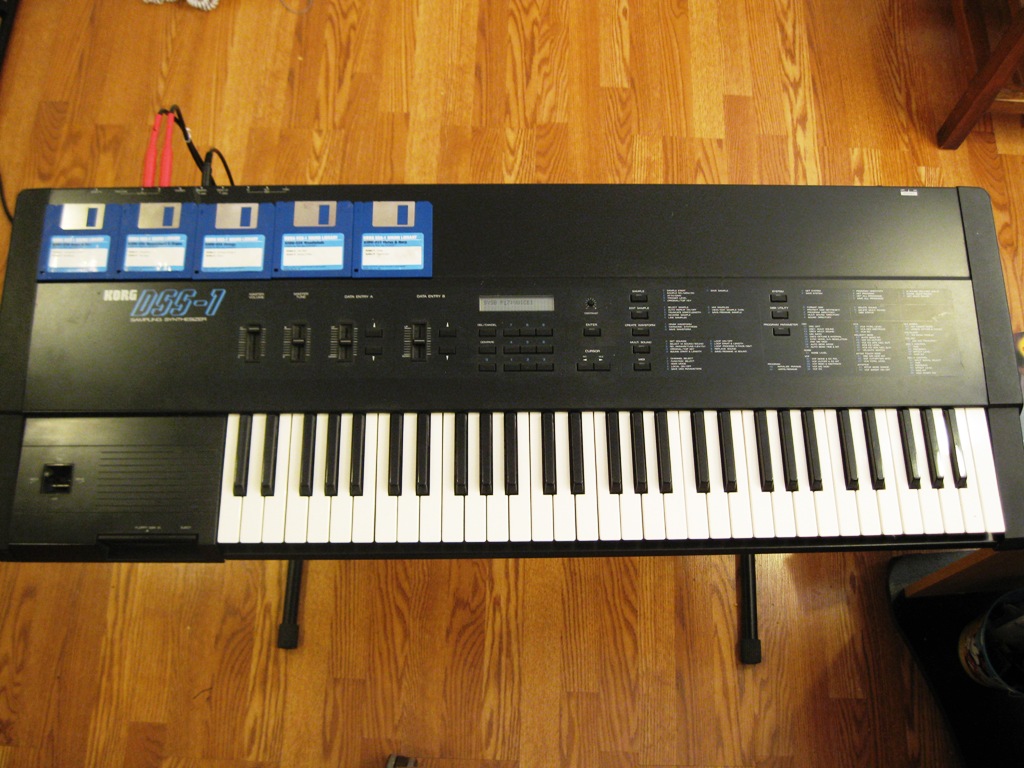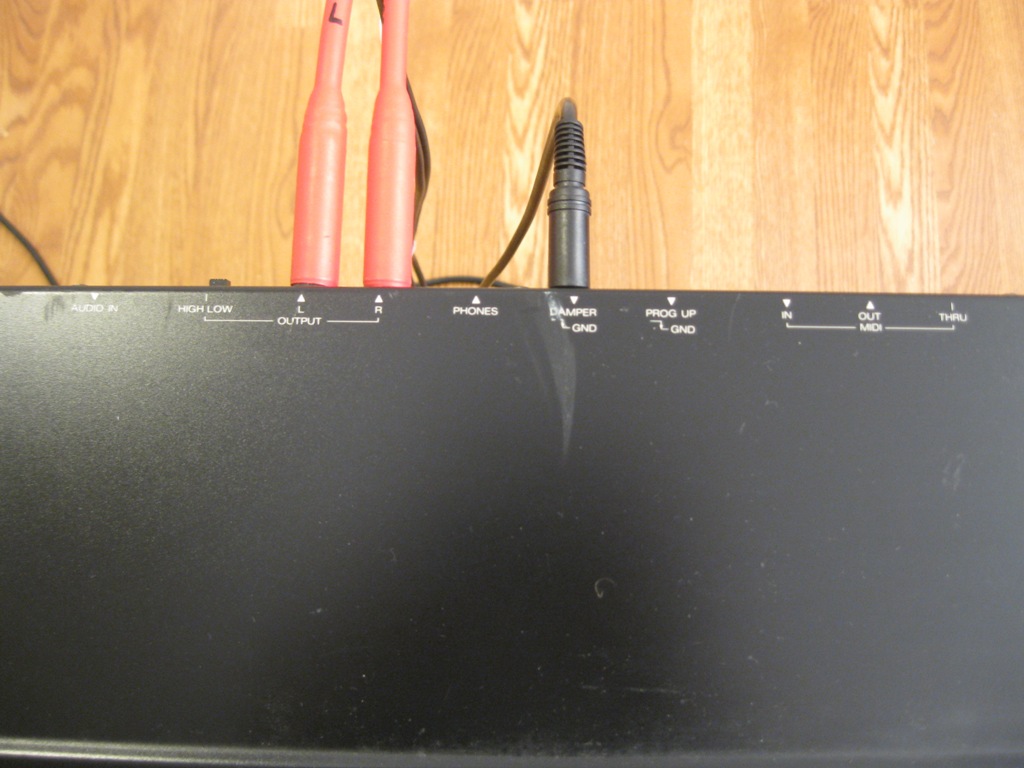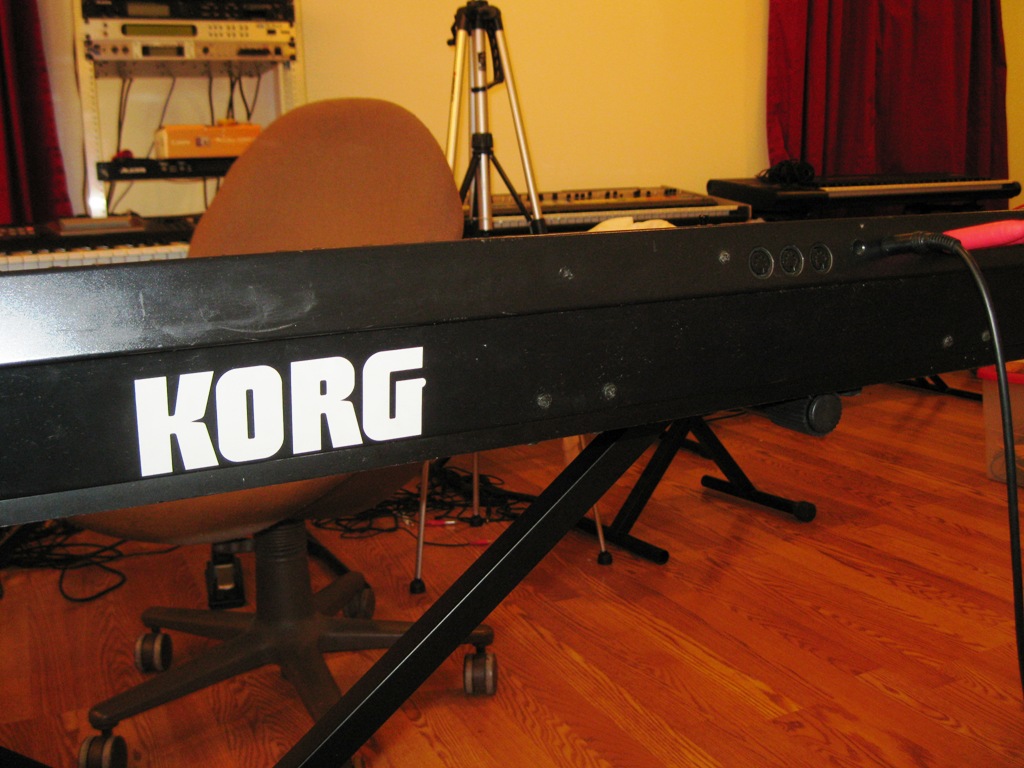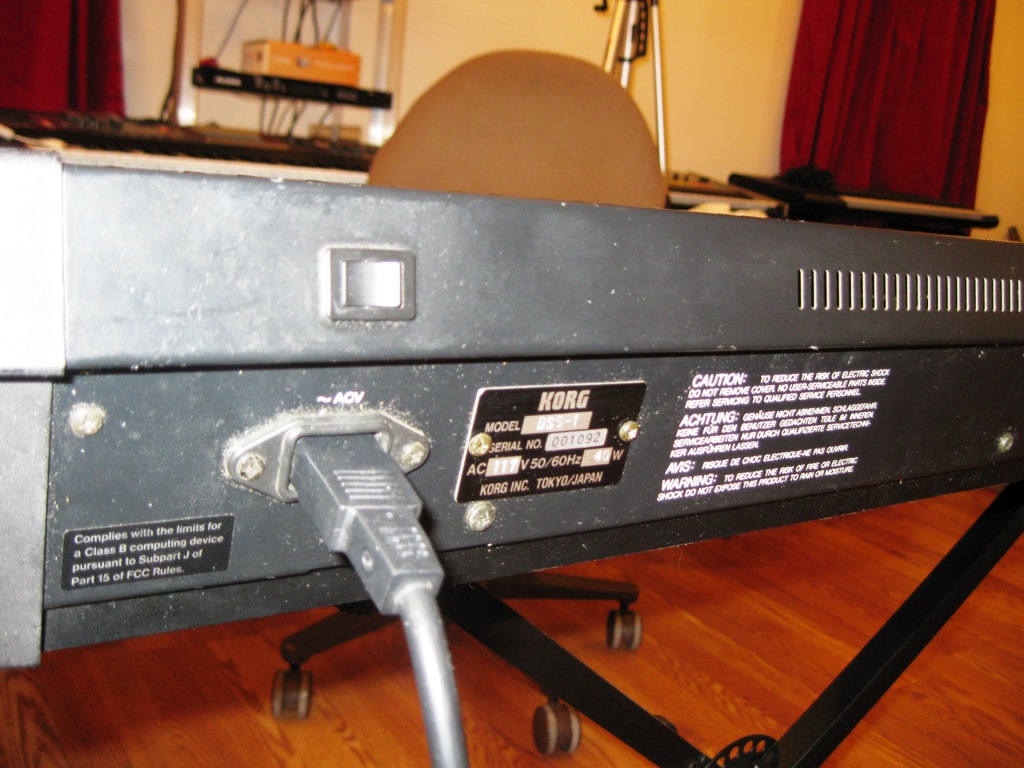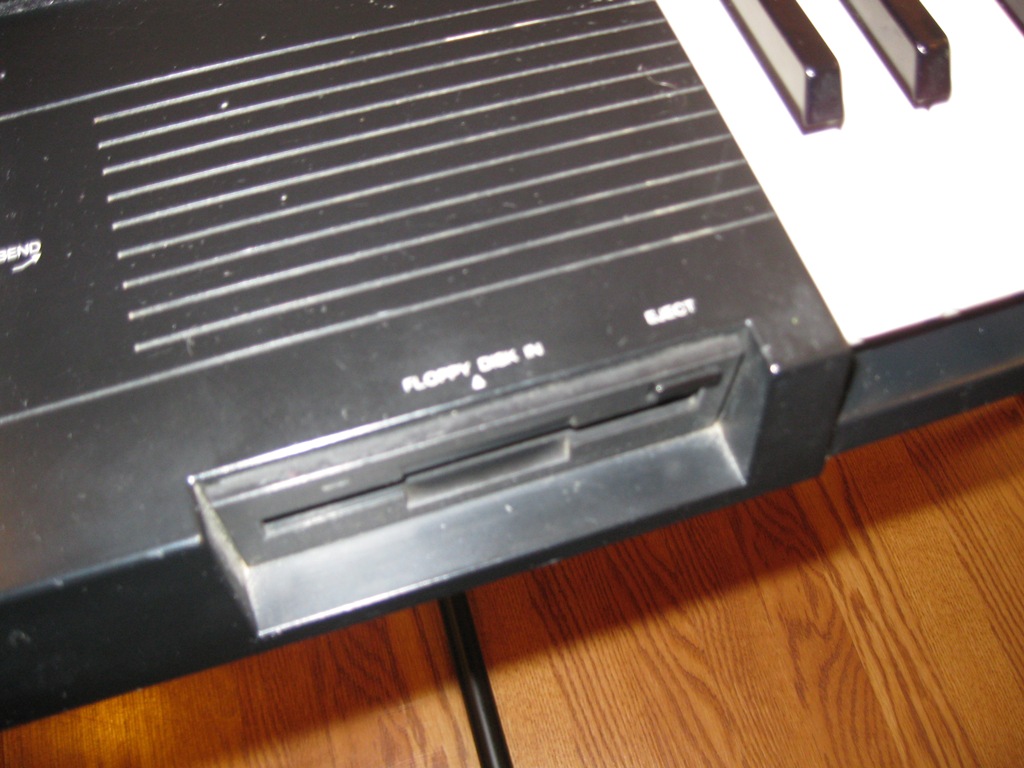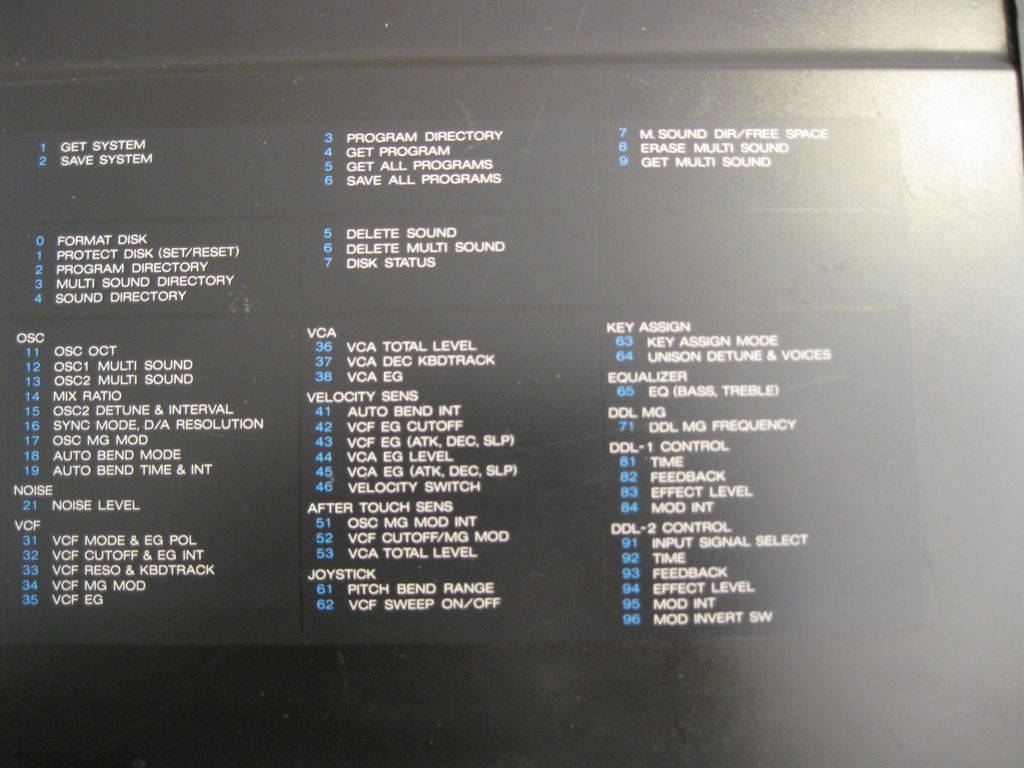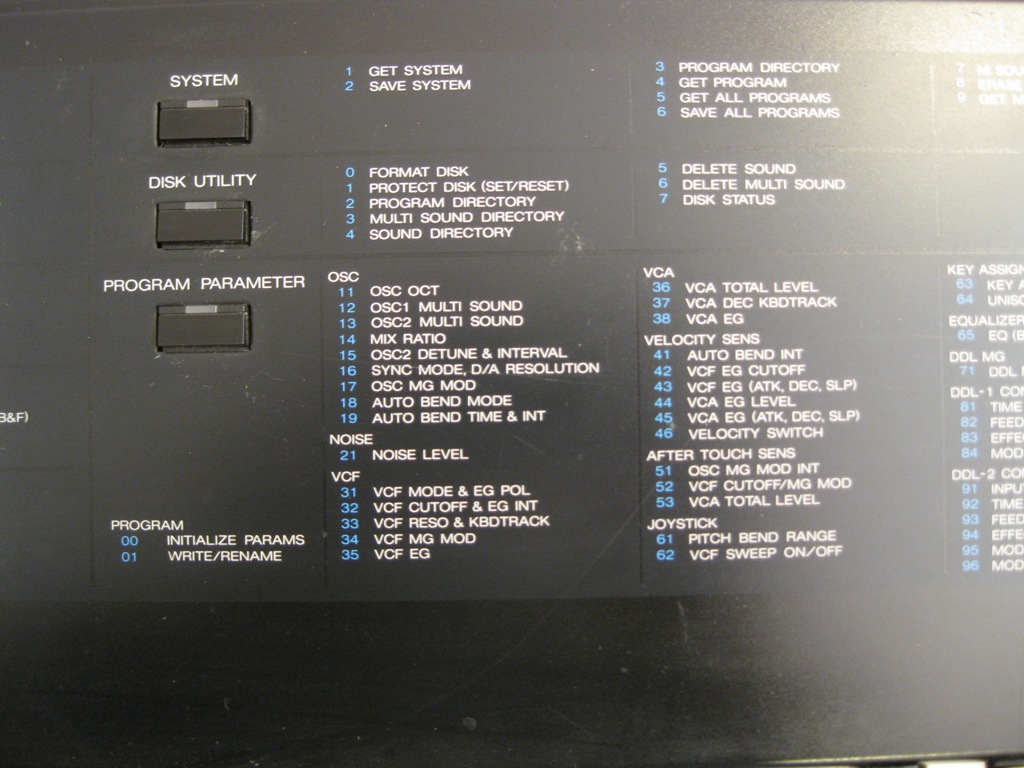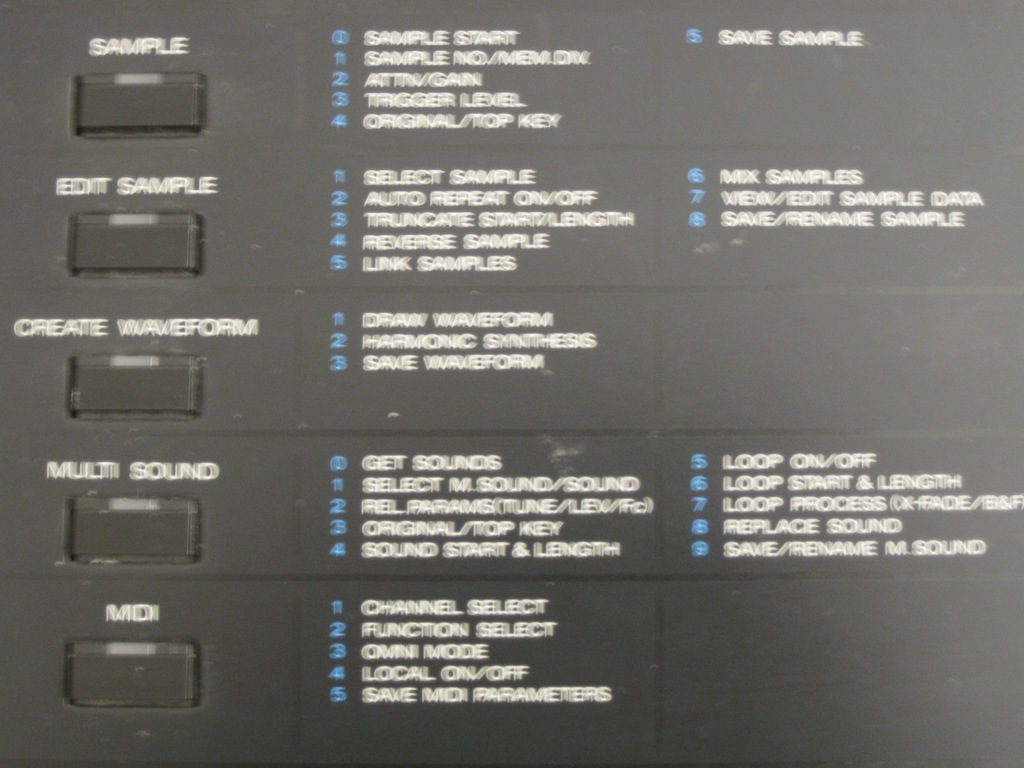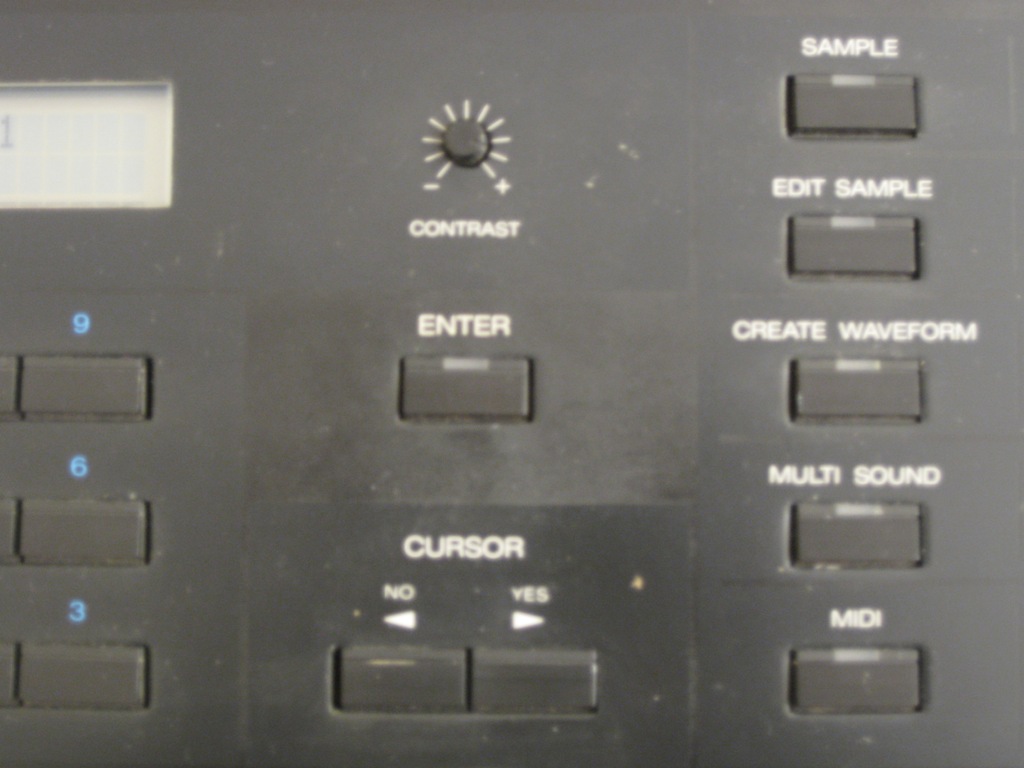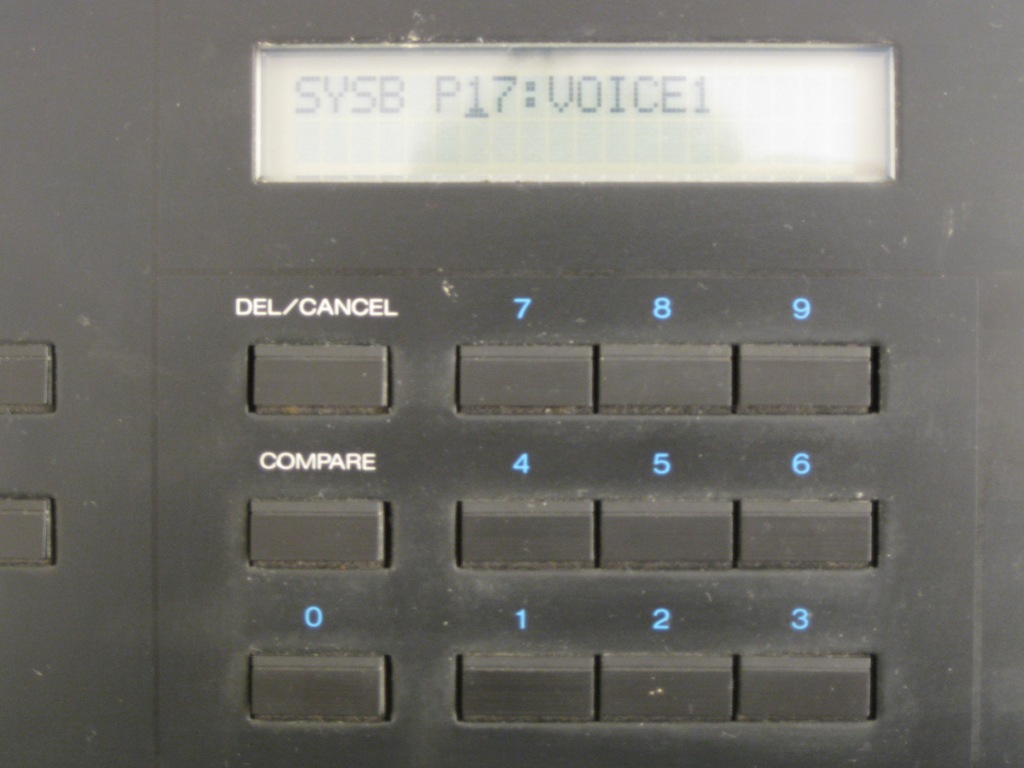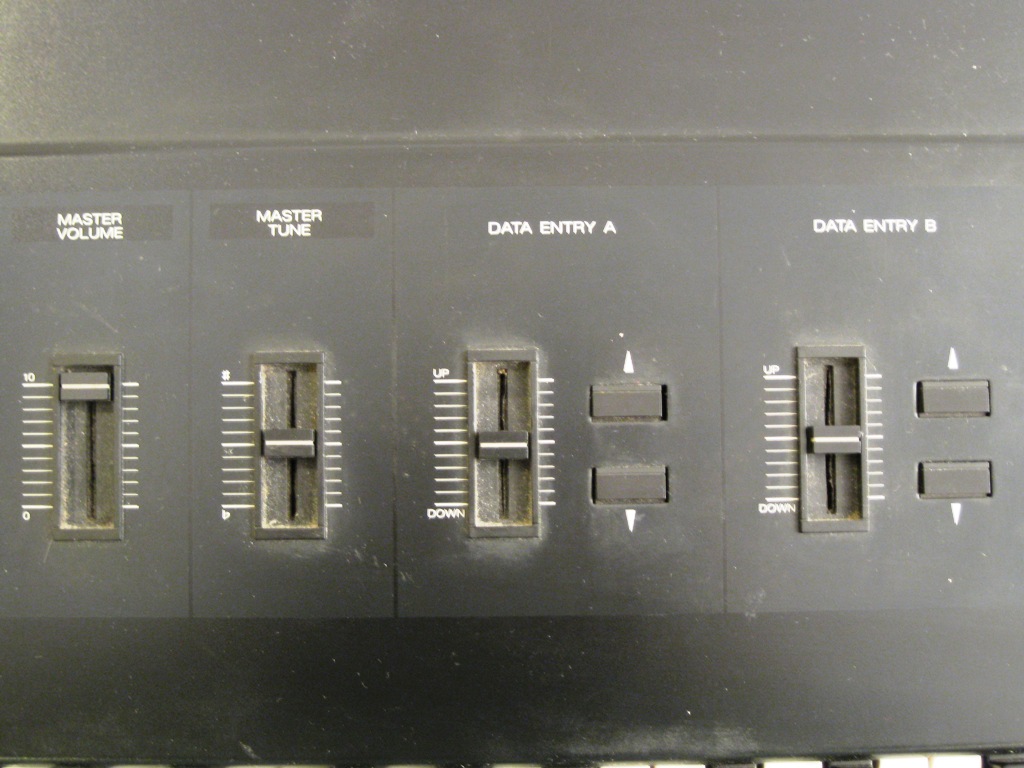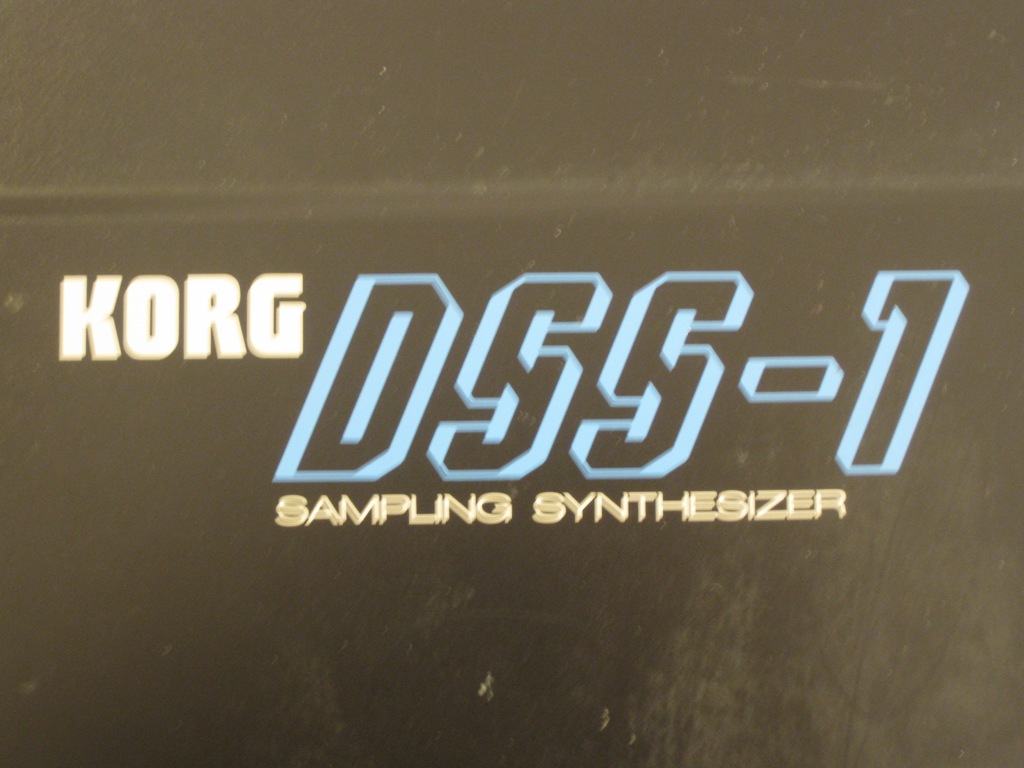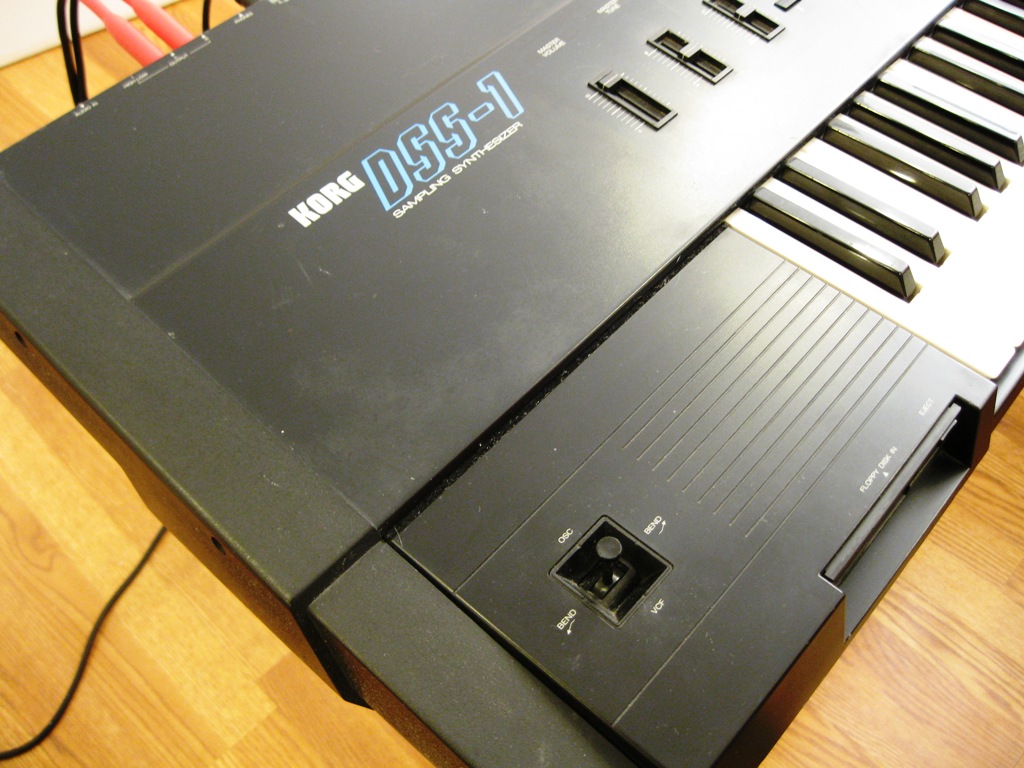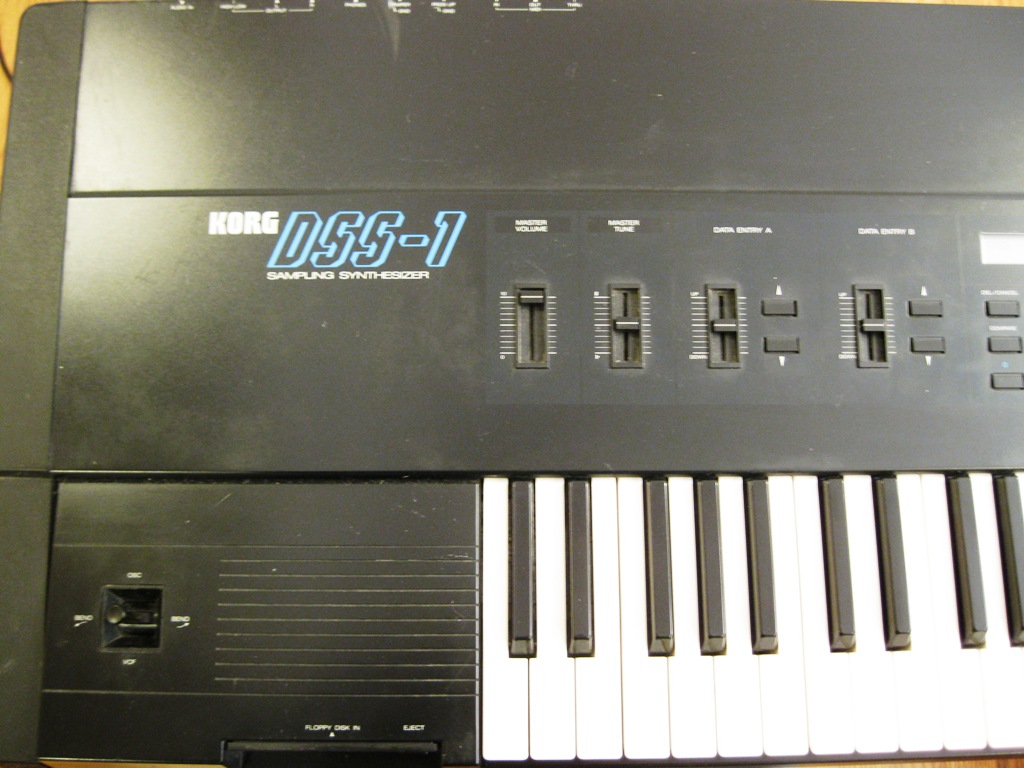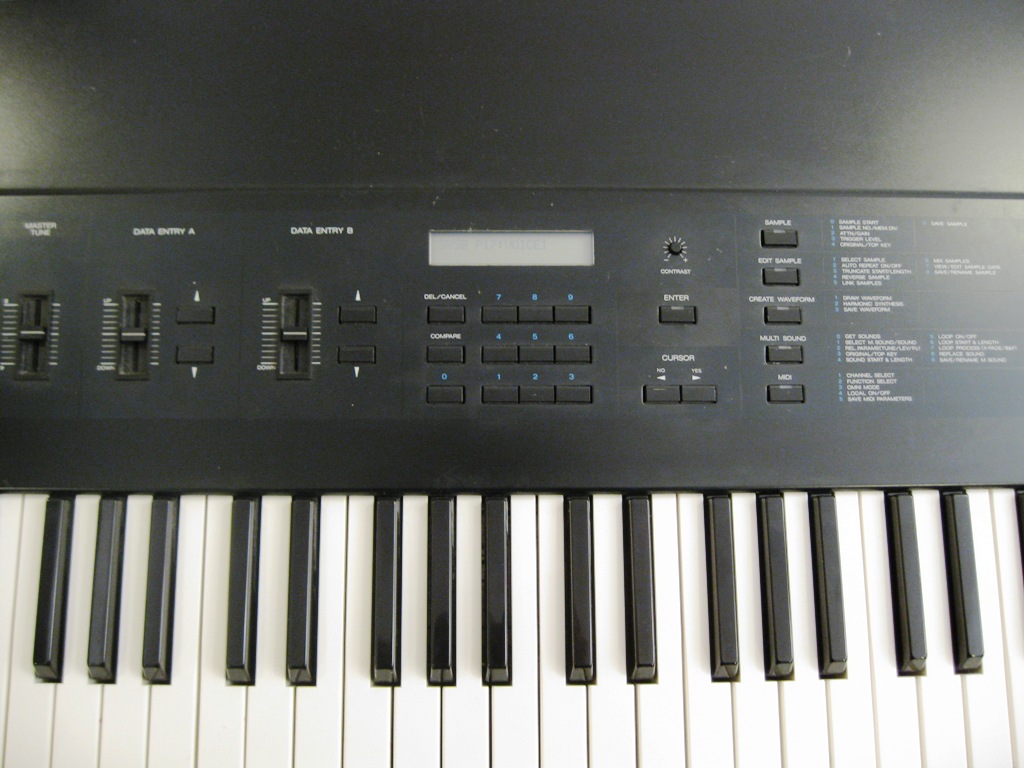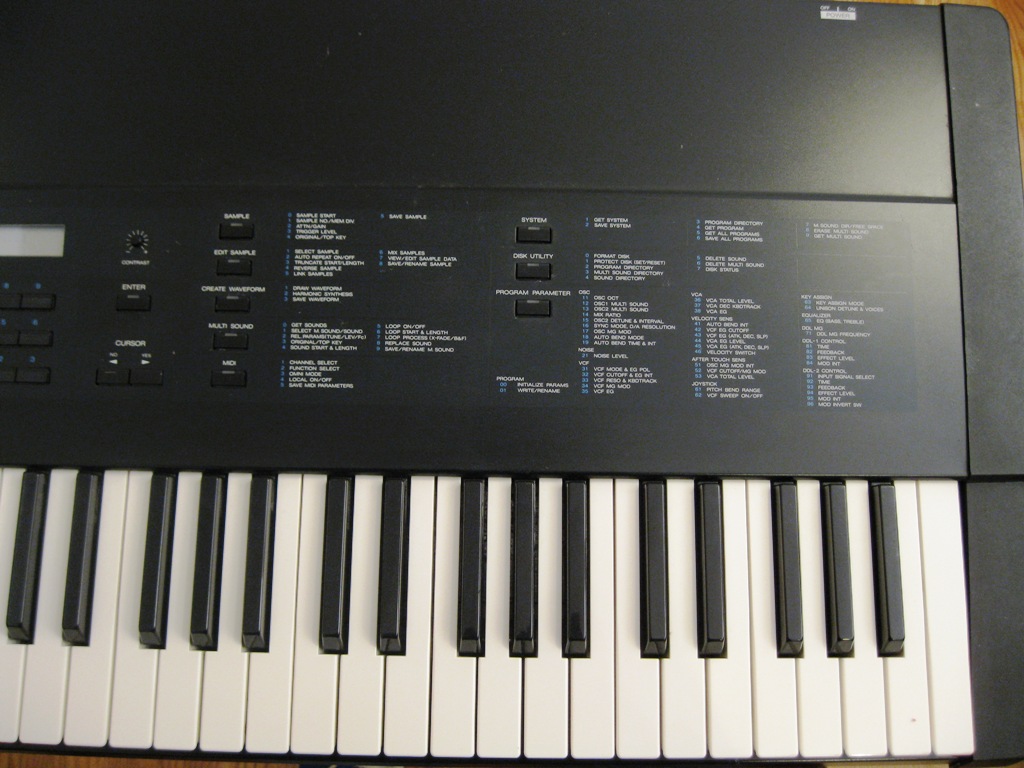Super LA Synthesizer
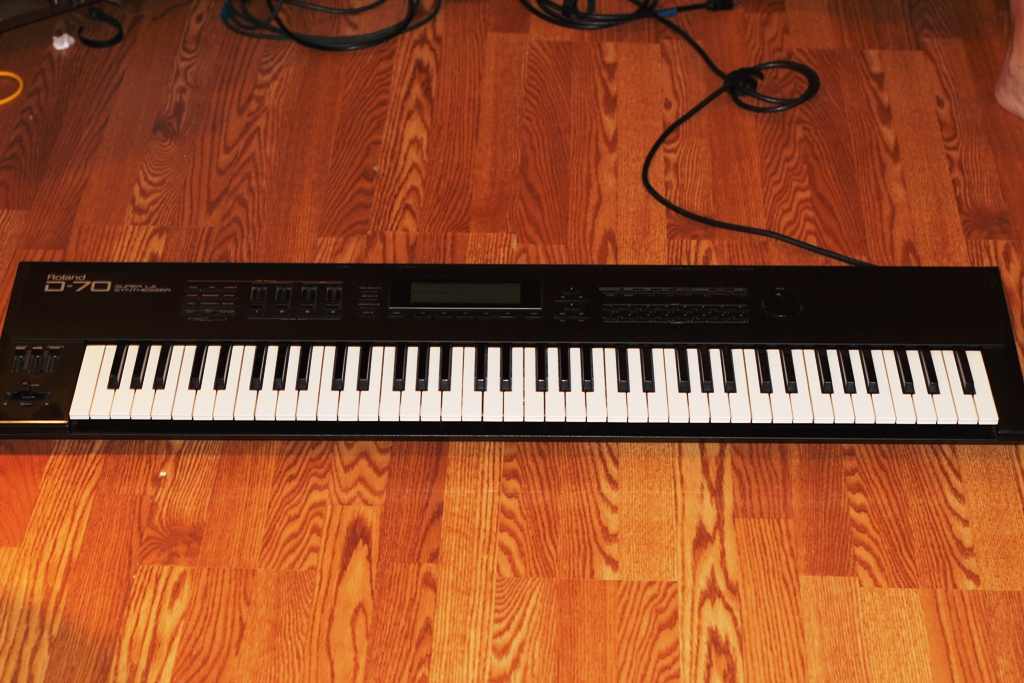
The sequel to the classic D-50 (even though it was really more like an upgrade of the U-20 – or “U-50” as found on the motherboard).
The D-70 is a wonderful synthesizer, that captures the spirit of the classic D-50, and takes it to a new dimension. This is a quality synth from a bygone era.
Great features include 76 keys, sound layering, and a very expressive aftertouch.
Like the D-50, Eric Persing and team did an unbelievable job with the sounds of the D-70. Patches like “Ghosties”, “Prologue” and “SpaceDream” are masterpieces of synth sound design. The sounds in ROM have a very punchy, full, “complete” sonic character that sounds great even today. The on-board effects are also of very high quality.
Roland D-70 audio demos
Roland D-70 factory demo – “Schizoid” by Eric Persing – copyright 1990 Eric Persing:
Roland D-70 manual
Roland D-70 factory patches in .mid and sysex
Note: You may need to slow down the transmission rate of the sysex, and the D-70 will receive it.
You can also press 5 when powering up and it will offer the menu to load sysex, but I found you don’t need it really… the D-70 receives the sysex from the main screen as well (which right now you see as a garbled mess – it’s okay).
The key in my case was to slow down the sysex transmission to very slow.
You can use any sysex software you like, but the shareware Bome’s SendSX or MIDI Ox worked well for me:
- Go to Options–>Settings and set the “Speed of Sending MIDI” to the lowest position
- In the same menu, set “Wrap long sysex messages upon loading”.
- Also don’t forget to select the MIDI interface that you are using, in the Bome’s “Midi Out” menu.
- Connect the MIDI out from your computer to the D-70’s MIDI In
- On the D-70, press Edit –>System Setup and set the “Exclusive RX” to ON and the Unit Number to “17”
- Send the sysex to the D-70 –
Roland D-70 photos
Roland D-70 specs
| Year of release | 1990 |
| Polyphony | 24 |
| Sound generation method | L.A. synthesis / PCM |
| Preset memories | Performances, Patches, Tones |
| Keyboard | 76-key |
| MIDI | in, out, thru |
| Sound expansion capabilities | yes, via cards |
| Sequencer | no |
| Arpeggiator | no |
| Velocity | yes |
| Aftertouch | yes |
| Optional accessories | – RAM card M-256E – PCM card SN-SPLA series, SN-U110 series – Stereo headphones Rh-100 – Foot switch FS-1, FS-5L, FS-5U, DP-2, DP-6 – Expression pedal EV-5, EV-10 – Keyboard stand: KS-5, KS-7, KS-8 |
| Dimensions | 1196mm (W) x 310mm (D) x 85mm (H) 47-1/6″ x 12-3/16″ x 3-3/8″ |
| Weight | 12kg / 26 lb 7 oz |
Roland D-70 links
